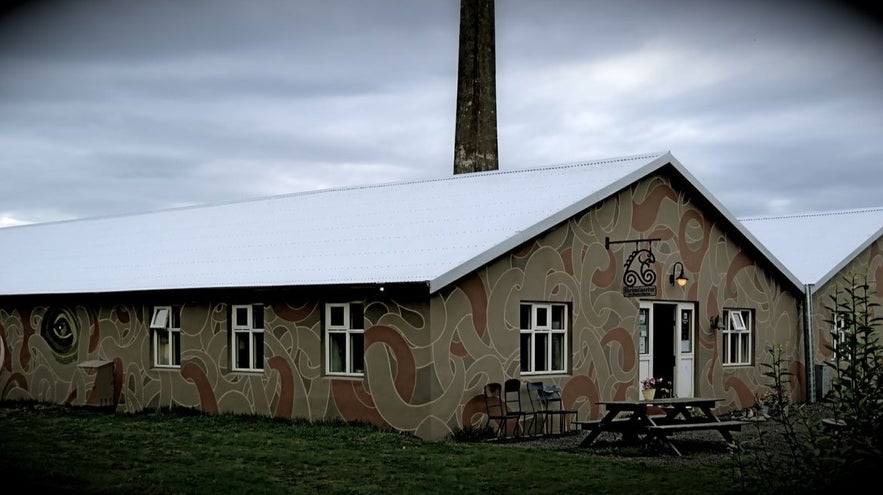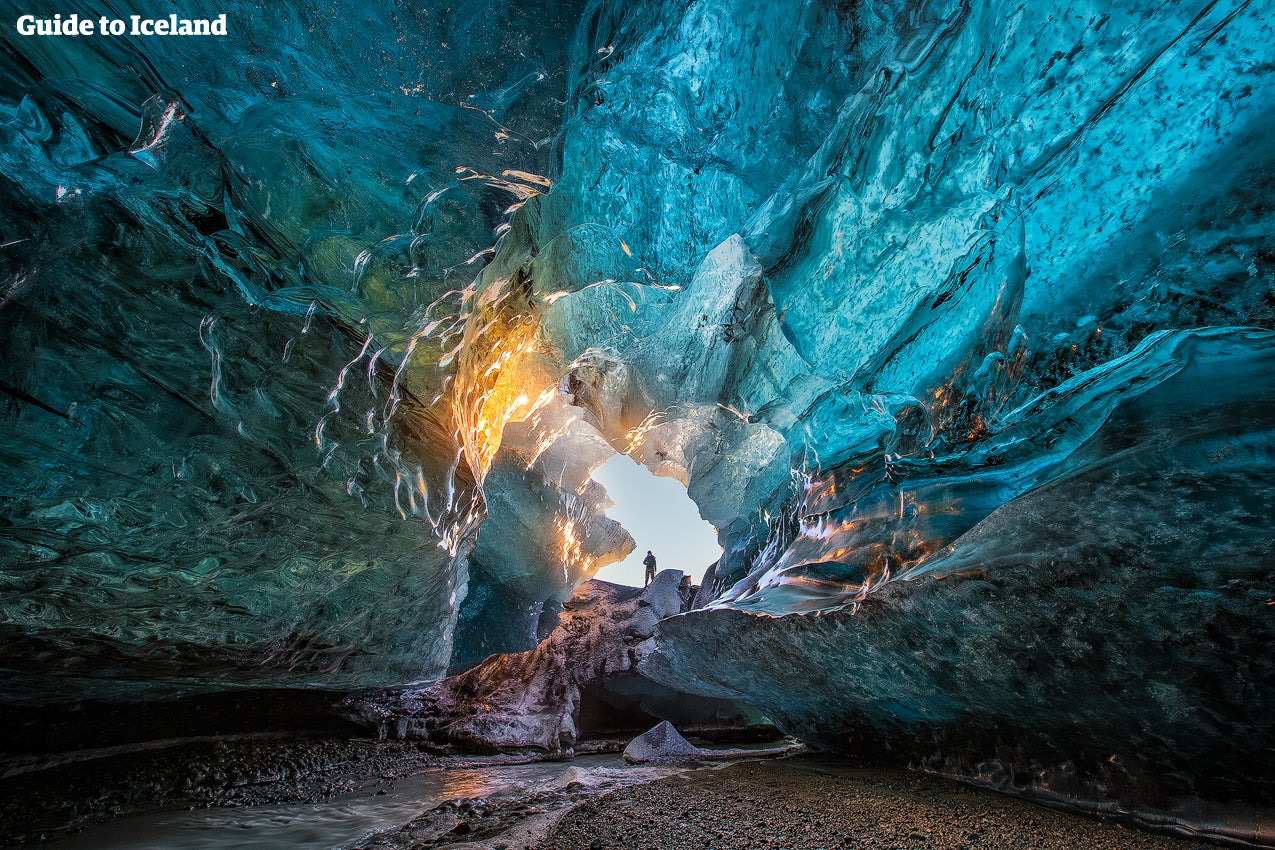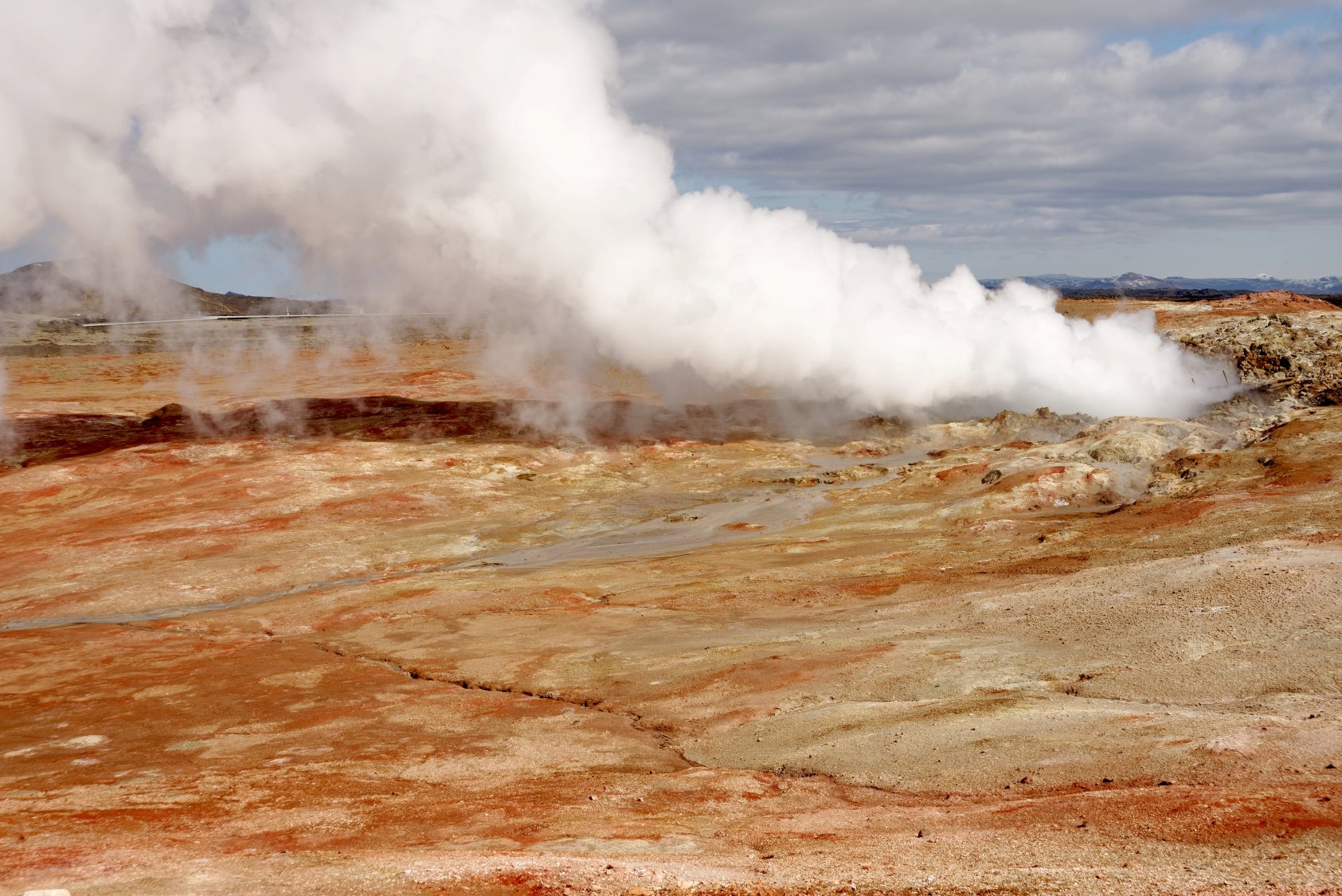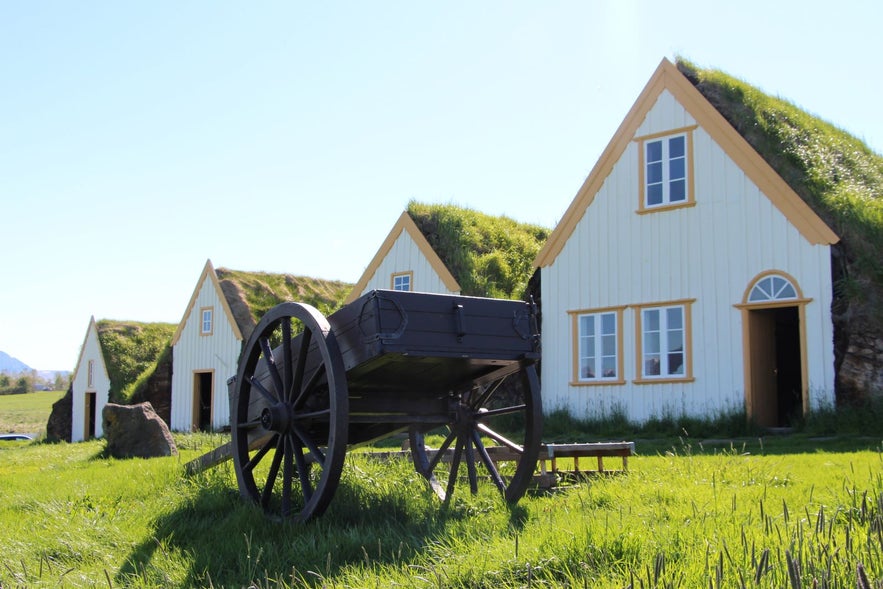
As you travel around Iceland, you can get to know the country's history in many different ways. While you can find many great museums in Reykjavik, such as the National Museum of Iceland, the Arbaejarsafn Open Air Museum, and the (in)famous Phallalogical Museum, the countryside has many cultural experiences to offer.
From heritage museums, historic buildings, nature, and varied art, you’re sure to find a museum that will pique your interest. You can also find many exciting and fun educational experiences and exhibitions to include in your travel plans.
Why You Can Trust Our Content
Guide to Iceland is the most trusted travel platform in Iceland, helping millions of visitors each year. All our content is written and reviewed by local experts who are deeply familiar with Iceland. You can count on us for accurate, up-to-date, and trustworthy travel advice.
Many of these museums can be found in and around the small towns and villages that pepper the beautiful Icelandic countryside. You can easily reach them with your rental car as you drive around the Ring Road or simply as part of a day trip from your accommodation in Reykjavik. You can also find some great accommodations around Iceland that make for the perfect base to explore what different regions have to offer.
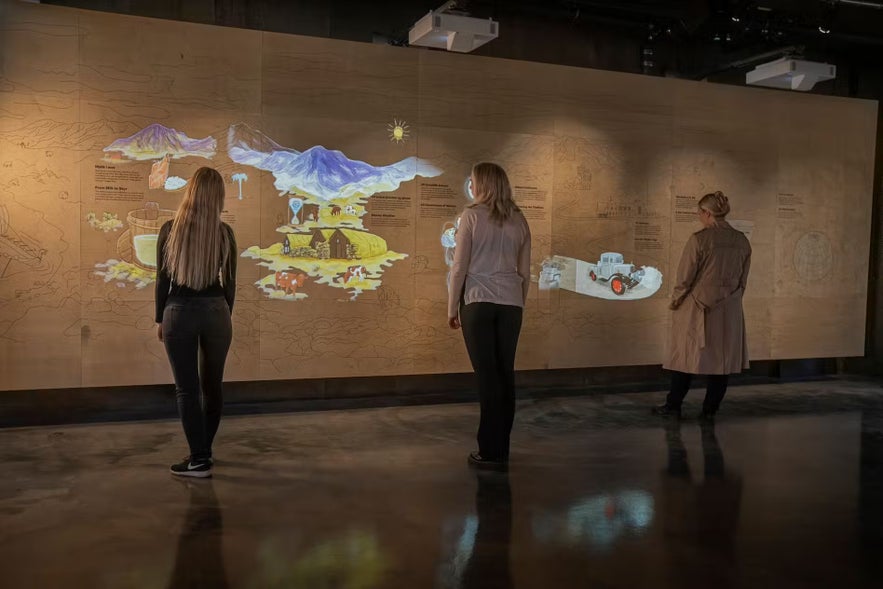
Photo from Entrance to the Skyrland Exhibition in Selfoss in South Iceland.
Now we must highlight that this list does not cover every single museum or exhibition in Iceland. There are far too many to include on this subjective list, and no matter where in Iceland you're staying, you'll easily find interesting and enriching experiences, even if they're not mentioned here.
The museums and exhibitions on this list were chosen because of their unique topics, great experiences, and convenient locations, so they can easily be included in your travel itinerary. As they're all very different, they're simply grouped by location. If you're eager to learn about Iceland and its culture you should book a ticket to a museum in advance. Read on to discover the best museums and exhibitions for your journey around Iceland.
- For art enthusiasts, check out the Top 12 Art Museums and Galleries in Reykjavik
The Best Museums in South Iceland
The Arnessysla Heritage Museum
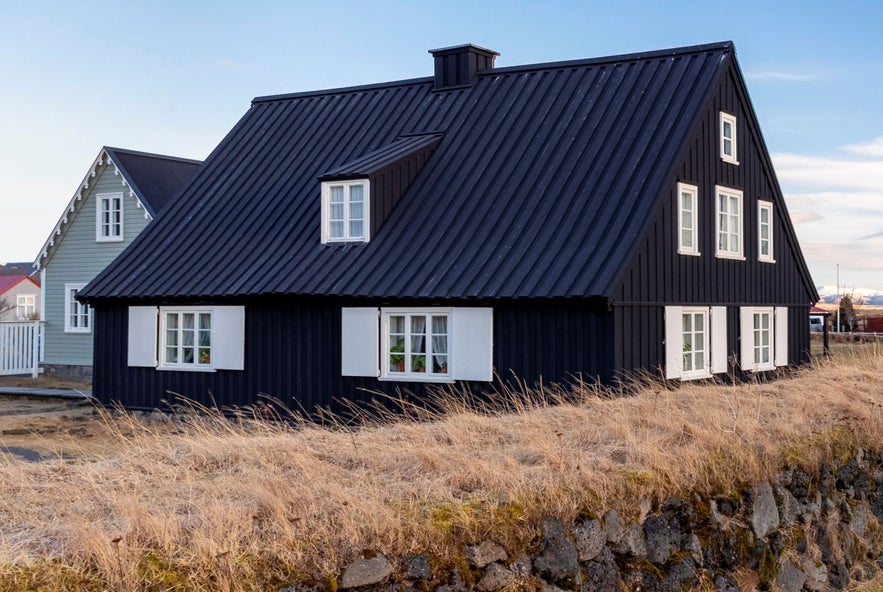 If you're planning to explore some of the South Coast during your time in Iceland, a great addition to your journey is the Arnessysla Heritage Museum. It's located in the small village of Eyrabakki, just an hour's drive outside central Reykjavik and a 14-minute drive outside the area's largest town, Selfoss.
If you're planning to explore some of the South Coast during your time in Iceland, a great addition to your journey is the Arnessysla Heritage Museum. It's located in the small village of Eyrabakki, just an hour's drive outside central Reykjavik and a 14-minute drive outside the area's largest town, Selfoss.
The Arnessysla Heritage Museum is in the area of the Golden Circle, so if you want to add a cultural stop to the route or want to expand your journey, this museum is a great addition. You can also simply visit as part of a fun day trip from Reykjavik.
This charming museum is spread over multiple historic houses and covers different topics. The largest exhibition is housed in a former merchant's home, originally built in 1765. Befitting the history of the house, its exhibition documents 200 years of commerce and trade in the area, as Eyrabakki used to be one of the largest trading centers in Iceland.
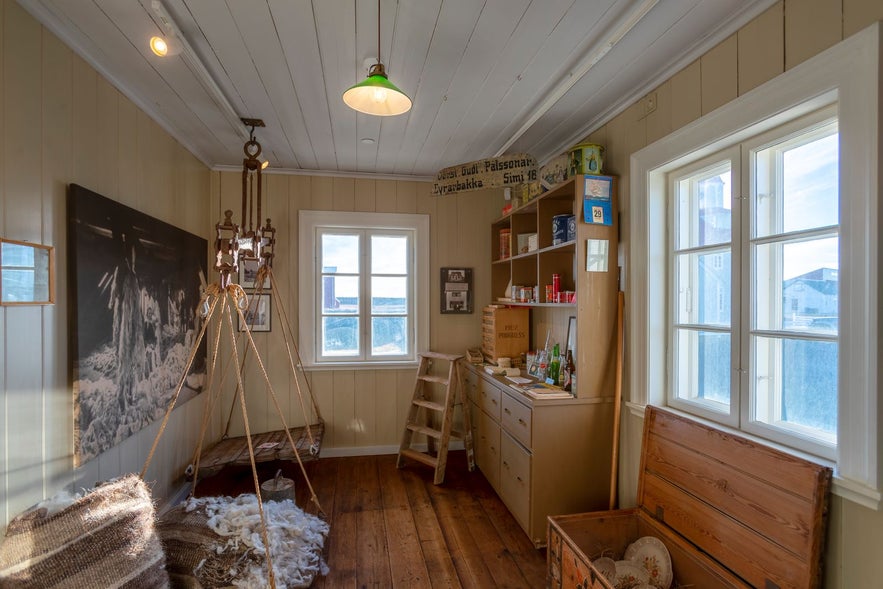
Inside the historic shop in the merchant's house.
You'll also be able to see an exhibit about fishing and Icelanders' historic relationship with the sea, complete with a preserved ship. In the village of Stokkseyri, just a 10-minute drive from Eyrabakki, you can find a remade 19th-century fishing station that brings insight into the daily life of fishermen.
For your last stop at the museum, you can visit the creamery, the only remaining one of its kind in Iceland, complete with all equipment. After you visit, we recommend carrying on the theme of this last exhibition and going for ice cream in the beautiful town center of Selfoss before continuing your journey.
The Skyrland Exhibition
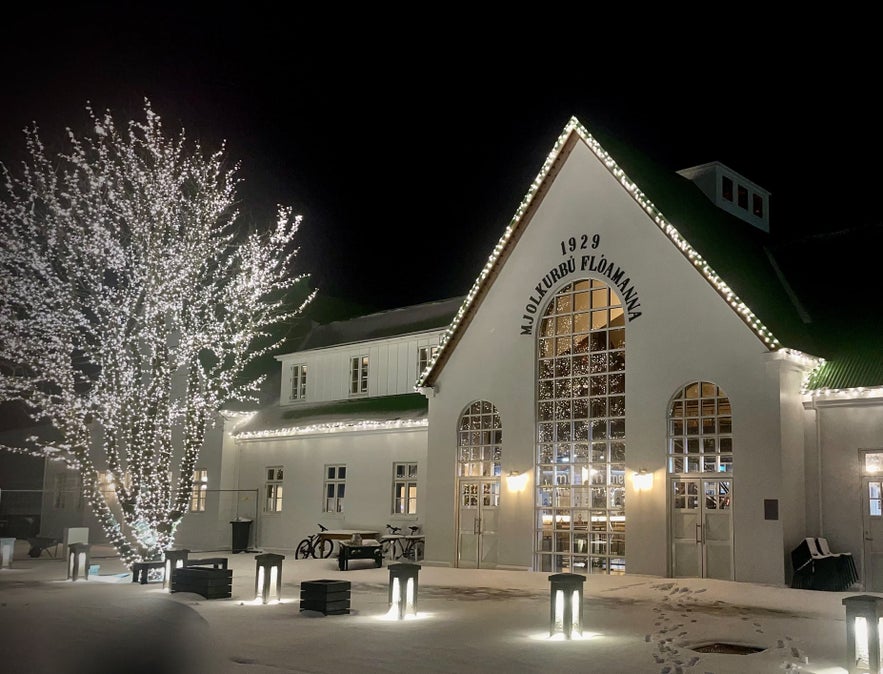
Photo from Skyrland.
Among the many cultural attractions that Iceland has to offer, The Skyrland Exhibition stands out as a unique testament to the nation's culinary and agricultural history. Nestled in the new but traditionally styled downtown of Selfoss, this museum is dedicated to skyr, the traditional Icelandic dairy product that resembles yogurt but boasts a richer texture and a distinctive tang.
Skyrland takes visitors on a journey spanning centuries, tracing the origins of skyr from its introduction by the island's Norse settlers to its current status as an Icelandic staple and a global delicacy. The museum showcases the age-old methods of skyr production, using wooden tools and traditional techniques that have been passed down through generations.
Beyond its culinary focus, Skyrland also delves into the socio-cultural significance of skyr, illustrating how this humble dairy product played a role in festivities, familial traditions, and even the great Icelandic sagas.

Photo from Entrance to the Skyrland Exhibition in Selfoss in South Iceland.
But it's not just about history. Interactive displays allow guests to discover the world of skyr with amazing interactive panels. You can also immerse yourself in the "box of summer," where you can smell the scent of lush grasses or breathe in the scent of different herbs and plants found in Icelandic nature.
For those intrigued by Iceland's gastronomic heritage, The Skyrland Exhibitions offers a fun and insightful experience. To make the visit even better, the museum is located in the town's beautiful Old Dairy Food Hall, where you can relax after your exploration and enjoy delicious food, including skyr!
The exhibition is an easy stop along the Ring Road and just a 50-minute drive from central Reykjavik. You can also easily include it in your journey around the Golden Circle, so don't miss out on the experience and book your entrance to the Skyrland Exhibition.
- Learn more: What Is Skyr and How Is It Made?
The Skogar Museum
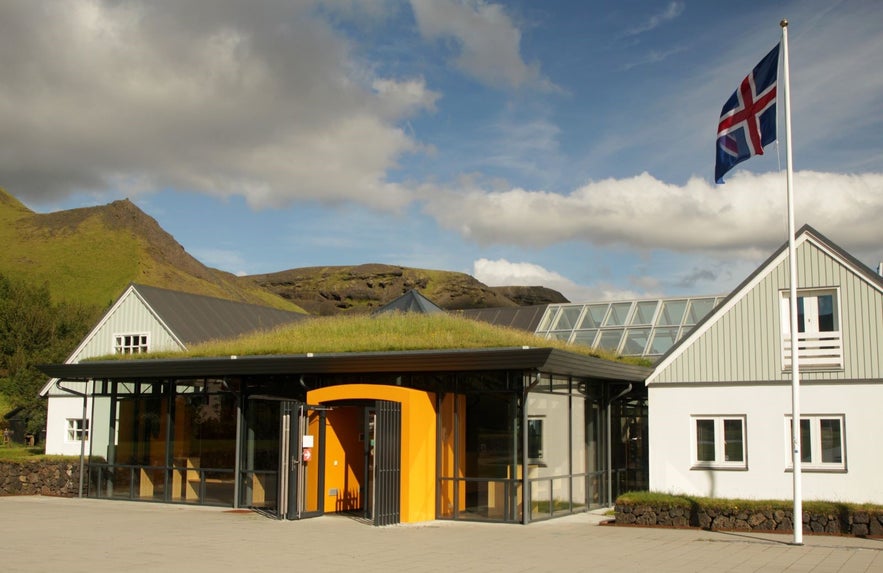
As you travel along the South Coast of Iceland, you can stop by the historic Skogar Museum. Located next to the stunning Skogafoss waterfall, this museum provides unique insight into daily life in the country.
It was originally established in 1949 and is one of the oldest museums in Iceland. The museum's former curator, Þórður Tómasson (1921-2022), was well known for his passion and expertise in Icelandic folklore and cultural history, which shaped the museum through the decades.
The Skogar Museum's collection encompasses more than 18,000 artifacts, many of which you can explore as you visit the museum's three exhibition spaces; the Folk Museum, Open Air Museum, and Technical Museum.
The Folk Museum boasts an impressive collection displayed on three floors. You'll get to know about fishing, agriculture, textiles, and natural history, with interesting artifacts dating back to the 20th- century and all the way to the Viking Age.
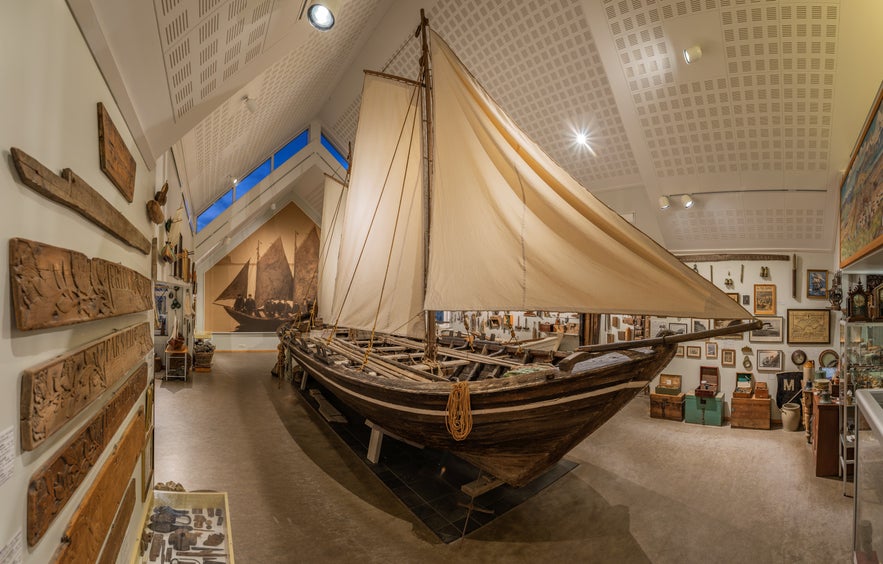
Once you've explored the Folk Museum, you can step back in time at the Open Air Museum. You'll see traditional turf houses, a church, a schoolhouse, and more, all providing an example of life in bygone days.
To end the visit, stroll through the Technical Museum. There, you'll get insight into the evolution of technology and transportation in Iceland, emphasizing the nation's adaptability and resilience. Once you've explored all three exhibitions, you'll have a much deeper understanding of Iceland, its culture, and its people.
The Skogar Museum is the perfect cultural stop on any visit to the South Coast, so include a visit on your itinerary, and don't forget to book your entrance to the Skogar Museum.
The Eldheimar Museum
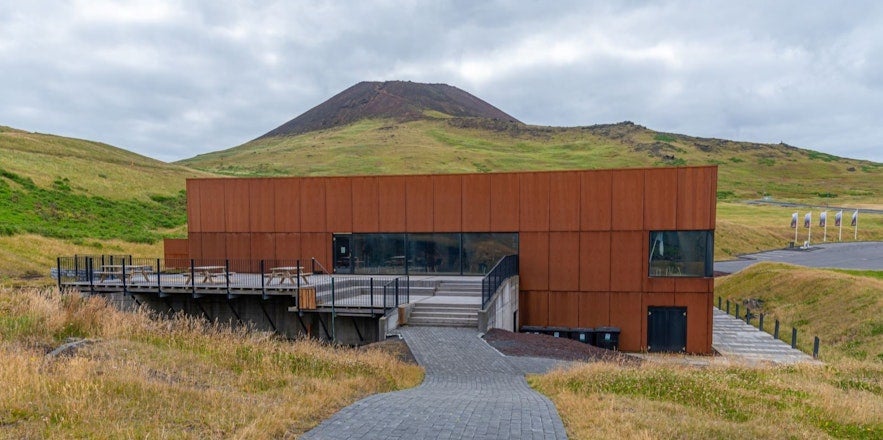 Eldheimar Museum, located on the Westman Islands, or "Vestmannaeyjar," is a testament to the overwhelming force of nature and the resilience of the human spirit. Often referred to as the "Pompeii of the North," this museum is dedicated to the sudden volcanic eruption on Heimaey island in 1973.
Eldheimar Museum, located on the Westman Islands, or "Vestmannaeyjar," is a testament to the overwhelming force of nature and the resilience of the human spirit. Often referred to as the "Pompeii of the North," this museum is dedicated to the sudden volcanic eruption on Heimaey island in 1973.
The Eldfell volcano's emergence reshaped the island's landscape and forced its entire population to evacuate overnight, and you can see the clear aftermath when you visit the island. The Eldheimar Museum encapsulates this fateful event and is built around the remains of a house that had been buried under layers of ash and lava.
Through a series of exhibits, photographs, and multimedia presentations, the museum captures the chaos of the eruption, the subsequent evacuation, and the determination of the islanders to reclaim their home from nature's grasp. Personal accounts and stories add a deeply human dimension, underscoring resilience in the face of adversity.

Photo from Regína Hrönn.
The Eldheimar Museum offers a profound connection to Iceland's volatile geology and the enduring spirit of its inhabitants. It's the best way to learn about the relationship between Icelanders and their nature.
Additionally, the Westman Islands themselves are characterized by stunning and rugged beauty and are well worth taking the time to explore. You can see the world's largest puffin colony or do a boat tour to see the stunning Elephant Rock. You can even pair a visit to the Eldheimar Museum with a hike to the Eldfell volcano, which towers over the town of Vestmannaeyjabaer.
Afterward, you can simply start your return trip to Reykjavik or stay in an accommodation in the Westman Islands to experience all that the islands have to offer. The archipelago is located off the south coast of Iceland, and you can visit via rental car by taking the Herjolfur ferry or as part of a Westman Islands tour from Reykjavik.
- Plan your trip with the Ultimate Guide to the Westman Islands
LAVA Centre
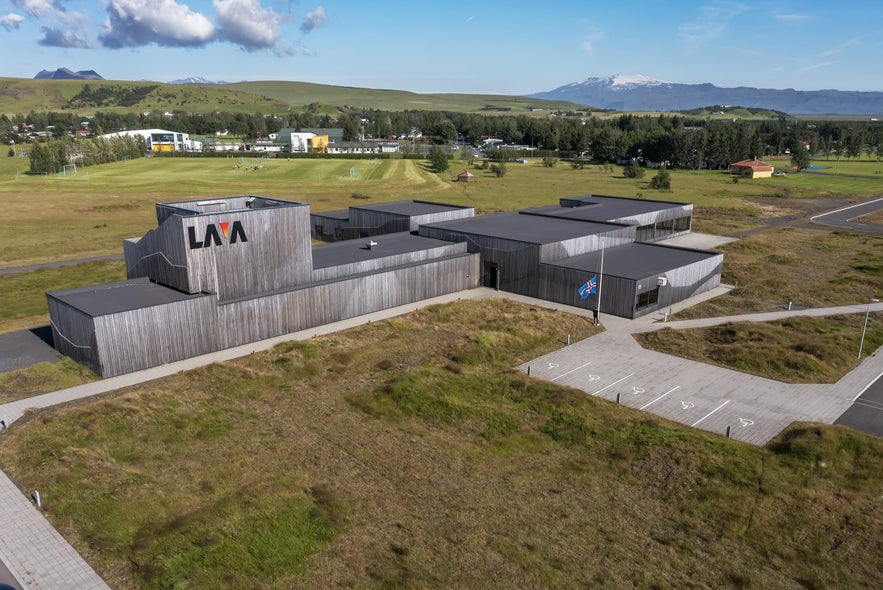 Iceland is often referred to as the "Land of Ice and Fire" because of its great icy glaciers and the volcanic activity that lies underneath the earth. There are constant reminders of this island's fiery power, with volcanos erupting on average every 5 years (though recently it's been every year)!
Iceland is often referred to as the "Land of Ice and Fire" because of its great icy glaciers and the volcanic activity that lies underneath the earth. There are constant reminders of this island's fiery power, with volcanos erupting on average every 5 years (though recently it's been every year)!
This makes the LAVA Centre in the town of Hvolsvollur a must-stop along the South Coast. This award-winning interactive exhibition brings you into the world of Iceland's volcanos and the forces that shaped our planet.
Learn about the effects of earthquakes and volcanos, how they work, and their history in Iceland through amazing interactive displays. You'll also be able to enjoy the LAVA Centre educational film, shown in their cinema room. Just make sure to include it when you book your Lava Centre entry.
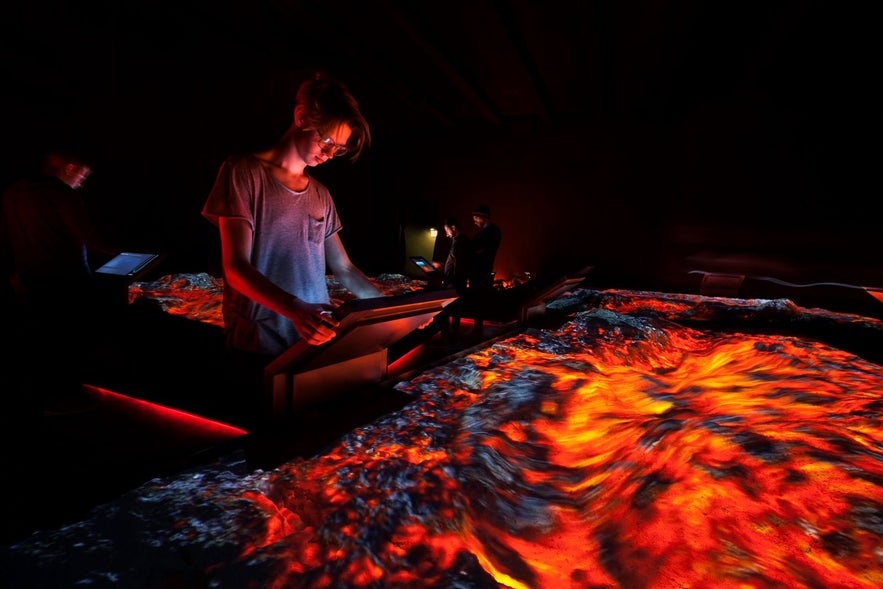 If you want to learn about this key characteristic of Icelandic nature, then a stop at the LAVA Center is a must. It's great for families and will provide a fun and memorable experience. It pairs greatly with other activities you may try during your visit, such as volcano tours and lava cave tours.
If you want to learn about this key characteristic of Icelandic nature, then a stop at the LAVA Center is a must. It's great for families and will provide a fun and memorable experience. It pairs greatly with other activities you may try during your visit, such as volcano tours and lava cave tours.
You can visit the exhibition as part of a day trip from Reykjavik, as the drive takes around an hour and a half, and there are many other activities in the area, such as the Golden Circle, the Seljarlandsfoss waterfall, and the Hekla volcano. You'll also see the notorious Eyjafjallajokull glacier volcano in the distance from your stop in Hvolsvollur, which famously erupted in 2010.
The Best Museums in East Iceland
The Heritage Museum of East Iceland
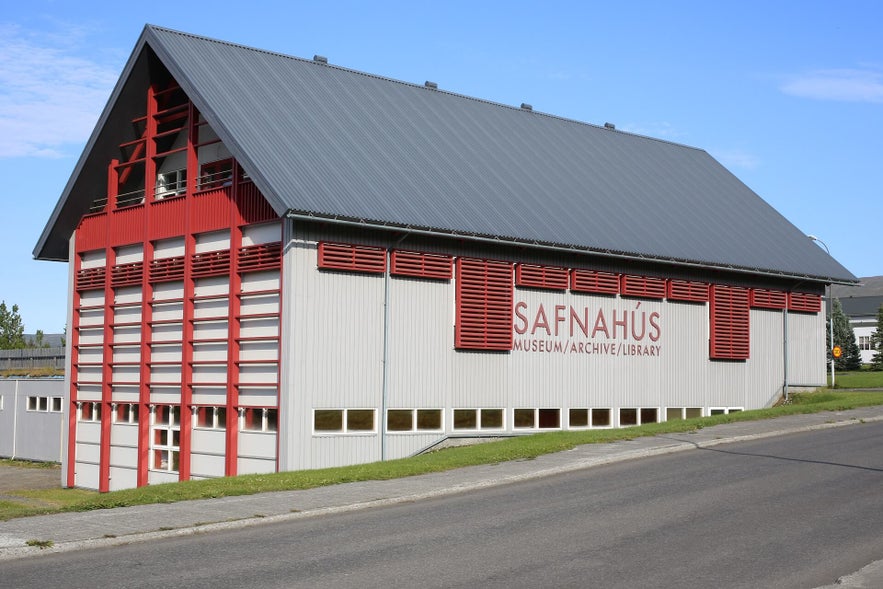
The Heritage Museum of East Iceland is located in the town of Egilsstadir, the largest town in the East, and offers a glimpse into the life of the people of the region through the centuries. It's a must-stop for anyone on a self-drive tour of the East Fjords, especially if you're staying in accommodation in Egilsstadir.
One of the museum's main themes is the interplay between nature and inhabitants. It demonstrates how the harsh and often unpredictable Icelandic environment shaped the lives, homes, and traditions of its people.
The museum features two permanent exhibitions. One chronicles the evolution of culture, work, and day-to-day self-sufficiency of the household in East Iceland. The other is dedicated to the reindeers of East Iceland, which have shaped the region's nature and culture, and you may be able to see during your travels in the region.
When you visit, you can also check out the temporary exhibitions that change regularly and highlight different parts of the history and culture of the region.
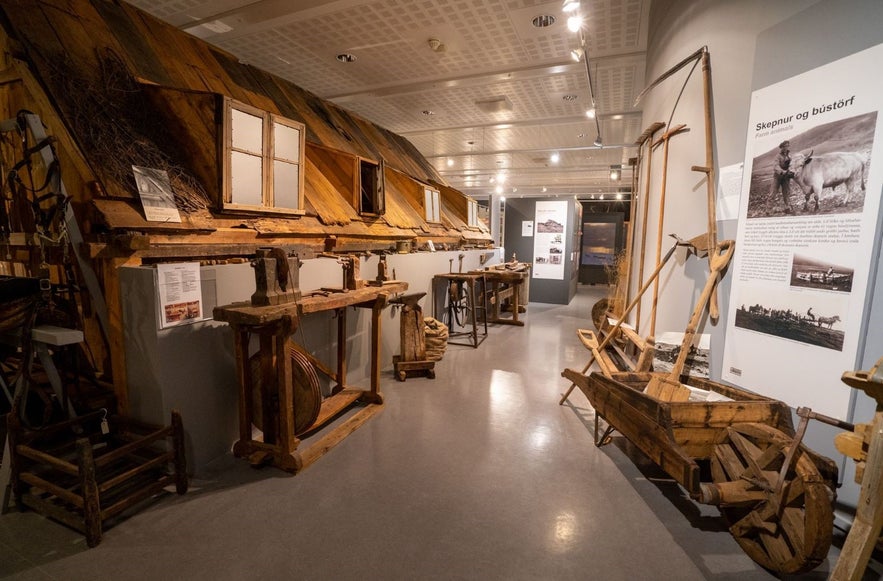
When visiting The Heritage Museum of East Iceland, you'll get to experience a slice of historic life, understand its evolution, and appreciate the region’s unique identity.
Moreover, it's an excellent complement to the natural wonders you might explore in the area, bridging the gap between the dramatic landscapes and the resilient people who have called them home. A visit here ensures a well-rounded appreciation of both the land and its rich cultural legacy, making the most of your visit to East Iceland.
- See more with the Ultimate Guide to Iceland's East Fjords
- See also: The Best Places to Visit in East Iceland
The Bustarfell Museum
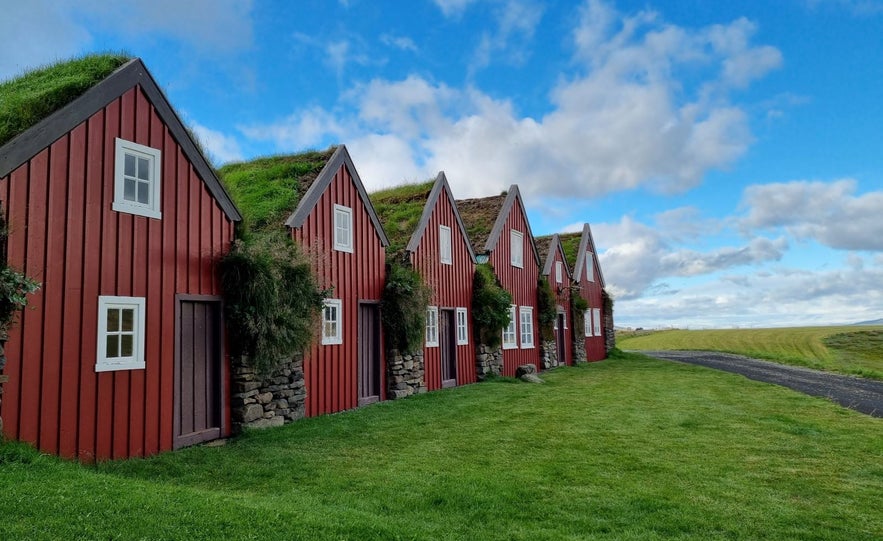
For insight into the enduring spirit of the Icelandic people, you can visit the Bustarfell Museum. Located in the fjord of Vopnafjordur in the Eastfjords, an hour and a half's drive from Egilsstadir, this historic turf farm was habituated until 1966, a time when Icelanders had almost completely left this form of housing behind.
The farmland has belonged to the same family since 1532, and the estate is a fascinating example of modernity meeting the past. The home was equipped with wind-powered electricity, water, and central heating, and it makes you wonder what a modern turf house would look like today with all commonplace amenities.
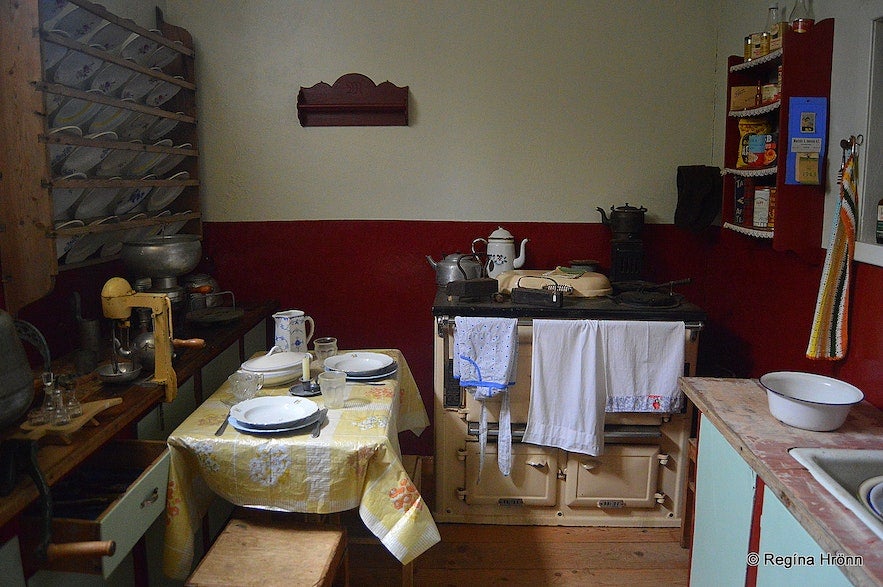
Photo from Regína Hrönn, the youngest of Bustarfell's three kitchens, from 1944.
The Bustarfell Museum tells the story of how life changed from 1770 until 1966, with artifacts that belong to different time periods. You can see how technology developed and how that affected people's daily lives, like with the house's three kitchens, each belonging to a different time.
It's a fascinating journey to the past and a great stop on your East Iceland itinerary. It's a bit off the beaten path, but it's well worth the trip! To make the most of your visit, you can have a rest at the nearby café and use the chance to explore the picturesque fjord and the Vopnafjordur village.
The French Museum
 As you travel along the East fjords, you may come across a hidden treat, the French Museum of Faskrudsfjordur. During a visit, you'll get to know a piece of Icelandic history that you may otherwise have missed, the presence of French sailors along the country's coasts through the centuries.
As you travel along the East fjords, you may come across a hidden treat, the French Museum of Faskrudsfjordur. During a visit, you'll get to know a piece of Icelandic history that you may otherwise have missed, the presence of French sailors along the country's coasts through the centuries.
The French Museum, housed in the restored French Hospital which was used to treat injured sailors, unfolds the story of these brave fishermen and the challenges they faced far from home. The exhibition features intricate sets showcasing daily life, along with artifacts, photographs, and stories that depict the perils of the sea. You'll also learn about the camaraderie among sailors and the warmth of the interactions between French visitors and local Icelanders.
 Beyond the tales of maritime adventures, the museum also shines a light on the legacy of French influence in Faskrudsfjordur, sometimes referred to as the "French town in Iceland." Even today, street signs in both Icelandic and French and the remnants of French architecture stand as reminders of this shared history.
Beyond the tales of maritime adventures, the museum also shines a light on the legacy of French influence in Faskrudsfjordur, sometimes referred to as the "French town in Iceland." Even today, street signs in both Icelandic and French and the remnants of French architecture stand as reminders of this shared history.
The former presence of French sailors can also be found all along the coast of Iceland. You may encounter monuments, buildings, and cemeteries connected to this shared history, such as in towns like Patreksfjordur, Grundarfjordur, and even in Reykjavik. For those traversing the scenic fjords of East Iceland, the museum offers an interesting journey into this shared Franco-Icelandic heritage.
The Technical Museum of East Iceland

Photo of the Technical Museum of East Iceland from VisitAusturland.
One of the most popular locations in the Eastfjords is the charming Seydisfjordur, a town known for its collection of colorful old houses, beautiful church, and lively art scene. It may even be your first stop in the country if you're traveling to Iceland with the Norraena ferry.
The town is home to the Technical Museum of East Iceland, a museum dedicated to the region's journey of modernization and progress. When visiting, you'll learn about the developments of the late 19th century to today, a story told through the vast collection of machinery, tools, and telecommunications equipment.
Photo of the Technical Museum of East Iceland from VisitAusturland.
There are multiple temporary exhibitions you can see. However, the museum is undergoing change, as it has faced great difficulty in the past few years.
In December 2020, a part of Seydisfjordur was hit by the largest landslide to ever hit a town in Iceland, devastating homes, businesses, and a large part of the museum's collection.
Thankfully, nobody was harmed in this event, but it had a huge impact on the town, its inhabitants, and Icelanders as a whole. The museum community in Iceland came together to reorganize, restore, and salvage what was left of the Technical Museum's vast collection, and you can learn about this enormous project at a recently opened exhibition.
This lovely town has a lot to offer, and the Technical Museum is one of its highlights. Make sure to include a stop on your journey, especially if you're planning to stay in Seydisfjordur.
The Wilderness Center
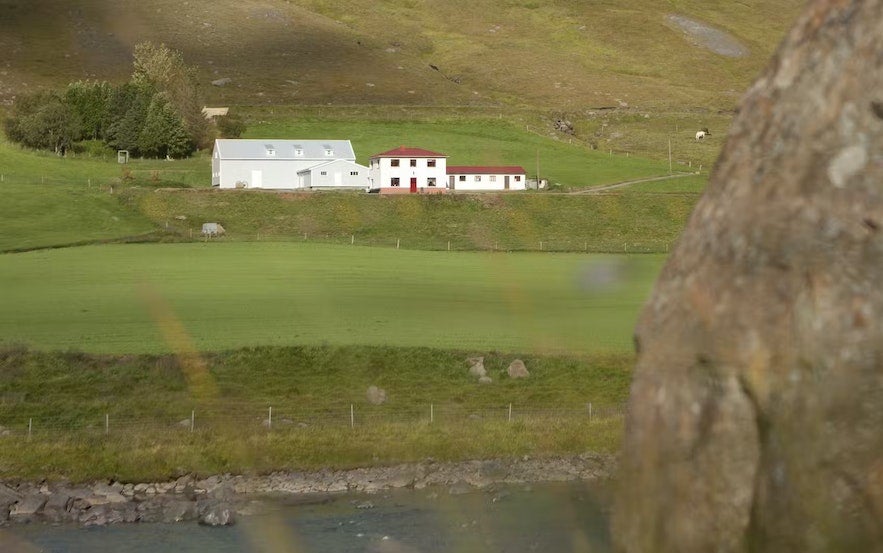
Photo from the Wilderness Center of Iceland
Tucked away amidst the dramatic landscapes of East Iceland, near the edge of the country's most extensive wilderness, lies the Wilderness Center. While the center's surroundings provide a visual treat of unspoiled nature, it's the historical exhibition that captivates the heart and mind.
The Wilderness Center is located in an old farmhouse, just an hour's drive from the town of Egilsstadir. Hear about the people who lived in this remote area, how they lived off the land, and their relationship with the wilderness. This story is told through interesting and interactive displays, artifacts, films, and recreations, and you can step into this time by staying at the Wilderness Center's accommodation.
Described as "staying in a museum," they offer rooms that are styled like historic buildings from different time periods. You can enjoy a night in a room that looks like an early 20th-century house or a 19th-century turf house. You'll also be able to enjoy the comfort of a homemade meal served on location.
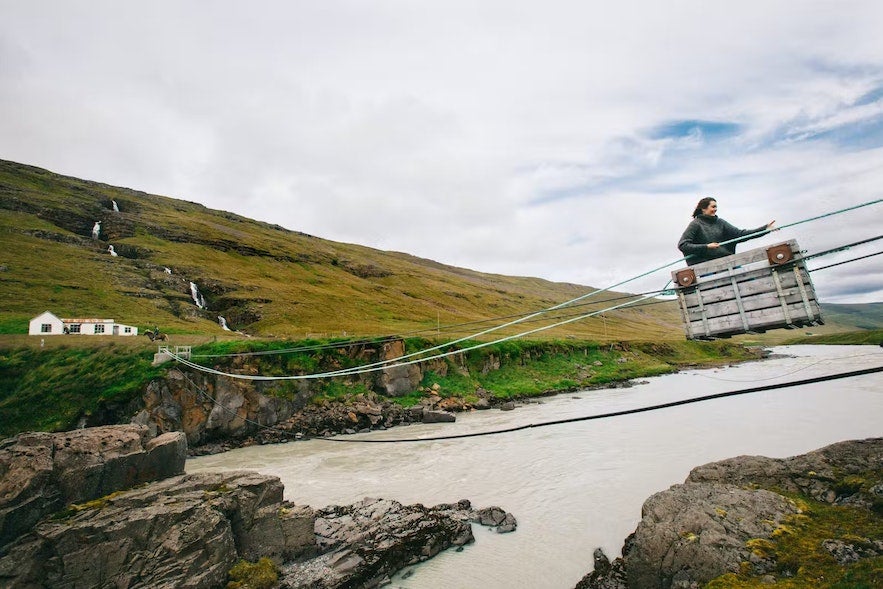
Photo from an Authentic 2-Day Winter Tour of Icelandic Culture & Nature with Transfer from Egilsstadir.
To make the visit even more magical, you can experience the surrounding nature with scenic hiking trails or go on a horse riding tour through the wilderness, experiencing a historic way to travel. During select hiking and horse riding tours, you can even try crossing a glacial river with a historic cable trolley.
If you're visiting around the Christmas season, you can also enjoy a special 2-day yuletide adventure, where you can take part in traditional Icelandic Christmas festivities and experience a full historic Christmas celebration. During this dark time of year, you may even be able to spot the northern lights because of the remoteness!
A visit to the Wilderness Center is a great way to learn about an interesting facet of Icelandic history and culture and combine it with a wonderful adventure.
The Best Museums in North Iceland
The Akureyri Museum
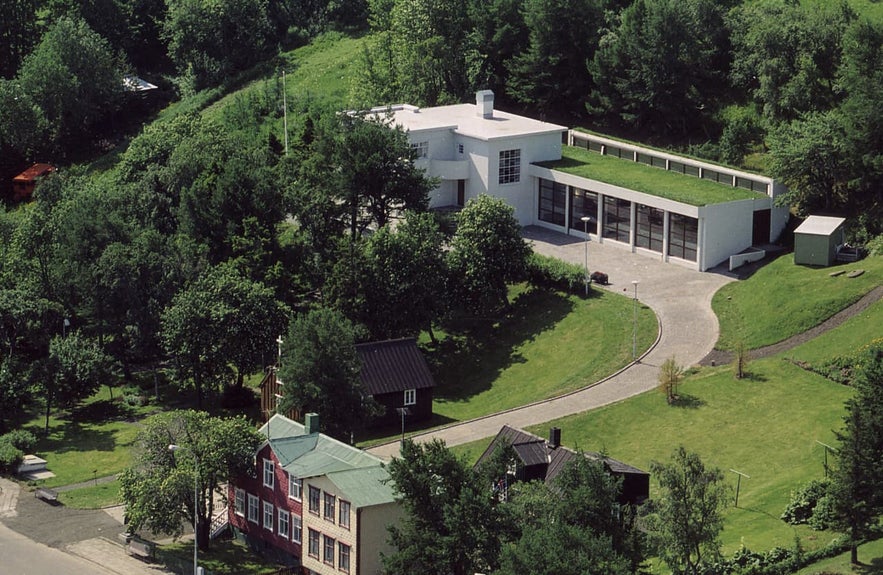
Photo from the Akureyri Museum website.
If you're planning a visit to North Iceland or a self-drive tour of the Ring Road, you can stop by the Akureyri Museum. As the largest town outside the Capital Region, Akureyri deserves a moment of your time, as you'll see some colorful and charming old houses, beautiful landscapes, and plenty of interesting attractions in the "Capital of the North." It can also be a good idea to stay in accommodation in Akureyri, as you can easily find enough to do over multiple days in the area, including exciting Akureyri tours.
The Akureyri Museum is one of the highlights of the town, and during your visit, you can see five different exhibitions. The main exhibition covers Akureyri's development, from everyday life to pivotal moments that shaped the area. Artifacts, multimedia presentations, and art pieces come together to paint a portrait of Akureyri's rich history.
You can then visit Nonni's House, one of Akureyri's oldest buildings, dedicated to Jón Sveinsson, or "Nonni," a writer and Jesuit priest. Another beautiful historic building showcases an old toy collection, and you can also see a traditional wood church, the largest "artifact" in the museum's collection.

Photo from Regína Hrönn. Nonnahús or "Nonni's house".
One fascinating and unique exhibition at the Akureyri Museum is the Schulte Map Collection. This amazing collection contains around 139 maps of Iceland, spanning from the year 1528 to 1847. You can see how the maps change through the ages, along with the general view foreigners had of the country, as many of them showcase fascinating cultural details like mythical creatures and monsters. It's definitely worth a stop.
Across the lovely Eyjafjordur fjord, you can visit the Laufas turf house, which is also included in the museum ticket. It's an example of an upper-class estate from the end of the 19th century, complete with a mid-19th-century church.
Habitation on the farm traces back to the settlement, and there are some pieces of the farm, such as wood used in the paneling, which is believed to date back to the 16th and 17th centuries. A visit provides insight into Icelandic life of the time and provides some great photo opportunities.
Don't miss out on a visit to the interesting exhibitions of the Akureyri Museum. It's a great way to get to know the spirit of North Iceland.
- For more, check out Nonnahus and Nonni - the Honorary Citizen of Akureyri
Akureyri Art Museum

Photo from the Akureyri Art Museum website.
Situated in the heart of Akureyri, the "Capital of the North," the Akureyri Art Museum stands as an emblem of creativity, surrounded by the beauty of northern landscapes. Founded in 1993, this museum has quickly become a nexus for the vibrant arts scene of the region.
The museum features different forms of artistic expression. The expansive galleries offer a canvas to a rotating collection of both Icelandic and international artists, ranging from groundbreaking contemporary pieces to influential works that have shaped the trajectory of Icelandic art history.
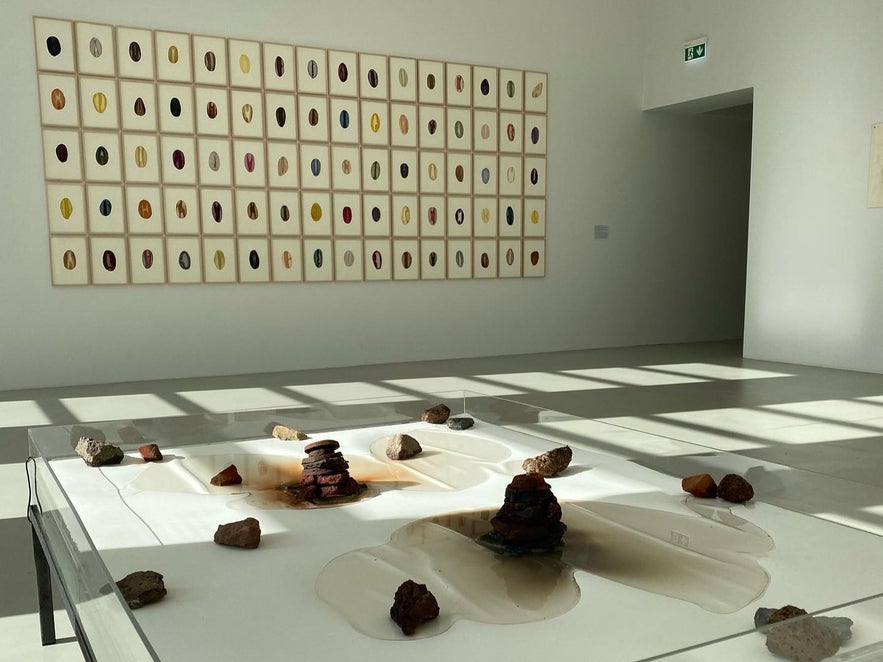
Photo from the Akureyri Art Museum.
Beyond its exhibitions, the Akureyri Art Museum plays a pivotal role in fostering community engagement. With workshops, lectures, and events, it ensures that art is accessible to all, stimulating dialogue, challenging perspectives, and nurturing creativity.
It's a great stop for any art lover traveling around North Iceland, giving fresh insight into the Icelandic art scene. The museum is located in the heart of Akureyris downtown, making access easy as you stroll through the town and visit other attractions like the beautiful Botanical Gardens and the Akureyrakirkja church.
If you're staying in Akureyri, we recommend starting your day by exploring the Akureyri Art Museum and pairing your visit with an amazing brunch at the museum café.
The Herring Era Museum
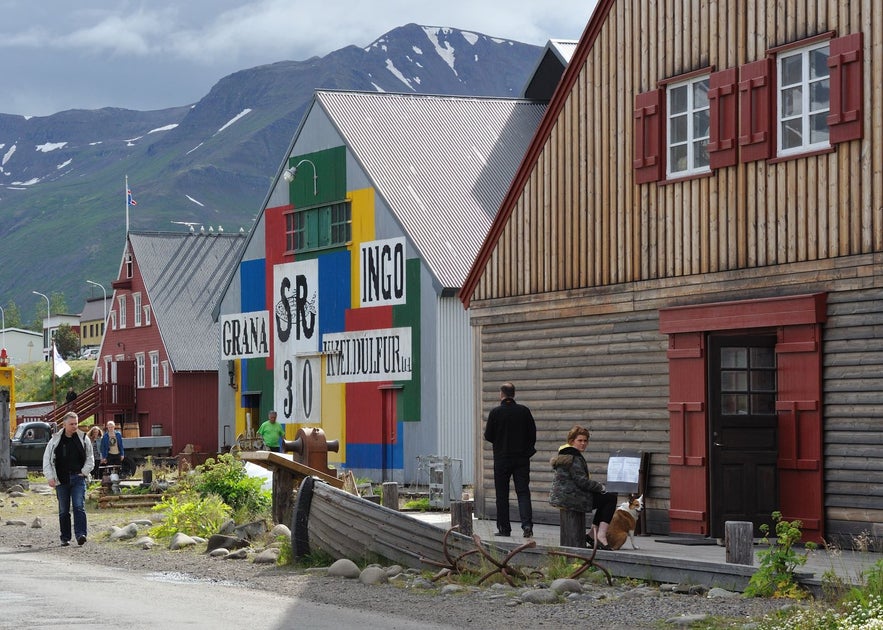
The Herring Era Museum is located in the lovely Siglufjordur, the northernmost town in Iceland, and highlights a time when herring fishing was the heart and soul of Icelandic coastal life. It's the largest maritime museum in Iceland.
Siglufjordur was known as a major center for herring fishing in the early 20th century and was, at a point, the 5th largest town in Iceland. As vast herring schools migrated to its waters, the town boomed, rapidly transforming into the "Herring Capital" of the country. The industry brought unprecedented wealth, with Siglufjordur contributing significantly to Iceland's national income.
However, by the 1960s, overfishing led to the herring's decline, profoundly impacting the local and national economy. The Herring Era remains a vital chapter in Iceland's history, embodying a period of prosperity and adaptation, and you can delve into this chapter at the Herring Era Museum.
The Herring Era Museum comprises five exhibitions in four different buildings. The largest building is the Boat House, where you can see a recreation of a North Icelandic herring port from around 1938-1954, complete with eleven different boats.

Next to the Boat House, you'll find "Grána," a reconstruction of an early 20th-century factory building. Its exhibition covers the history of fish meal and oil production in Iceland, along with the use of said products.
Afterward, you can head to the Salting House, also known as "Róaldsbakki," which focuses on the fishing and salting process of herring. In front, you can also see a demonstration of the historic salting process, giving a glimpse into the past along an old-fashioned pier. The performance is often accompanied by musical performances and dancing.
The last building is the herring warehouse, "Njarðarskemma," which is dedicated to the technological development of the industry, and your last stop through the museum is the Old Slipway. There, you can see boats being repaired along with the tools and equipment that were used around 100 years ago.
Overall, a visit to the Herring Era Museum is a chance to delve into this monumental period in Icelandic history. It's a must-stop on any visit to Siglufjordur and will provide insight into the development of the many small fishing towns that pepper the Icelandic coastline. If you'd like to stay in this historic town, make sure to book accommodation in Siglufjordur ahead of time.
Glaumbaer
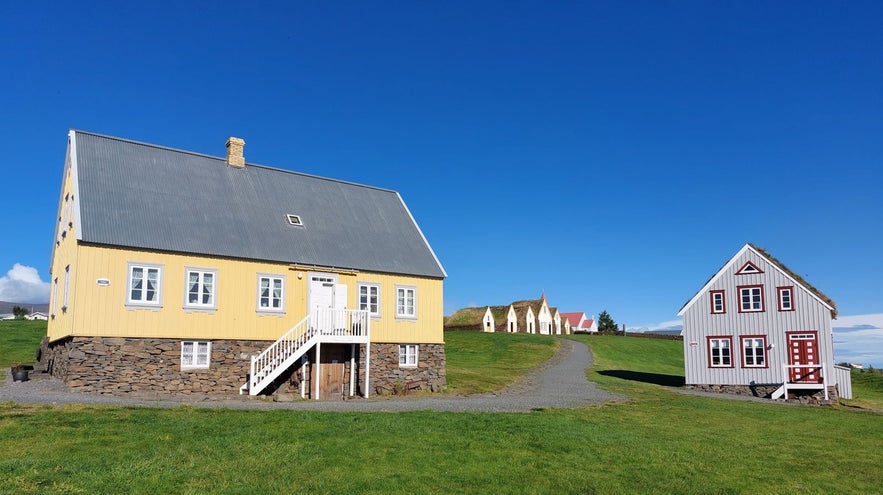
The historic Glaumbaer estate is part of the Skagafjordur Heritage Museum, located in North Iceland and just over an hour from Akureyri. This open-air museum transports visitors back in time, preserving and presenting traditional Icelandic architecture, culture, and history in an authentic and immersive setting.
The oldest part of Glaumbaer, as it is today, is believed to date back to the mid-18th century, with the most recent addition dating back to between 1876 and 1879. The farm is older, however, as turf houses traditionally were changed and rebuilt through time, with the oldest remnants of habitation in the area dating back to the time of settlement. The last inhabitants of the farm moved out in 1947, and Glaumbaer's first exhibition opened just 5 years later.
Today, you can explore this historic turf house which encompasses thirteen buildings connected by a long passageway. You'll be able to take a step into the past and explore the living quarters of 19th-century upper-class Icelanders and see what daily life looked like.
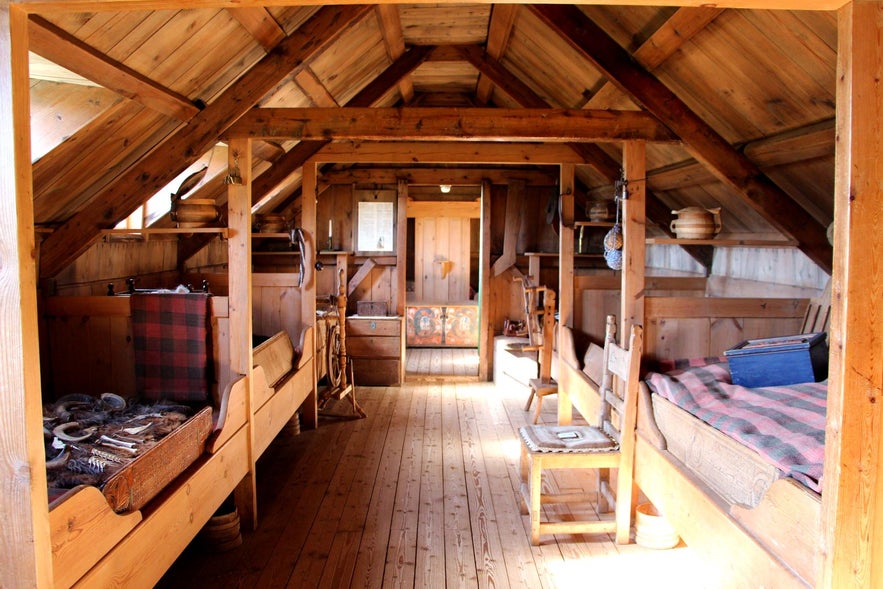
You can also visit two mid-to-late 19th-century wood houses just next to Glaumbaer, one of which features an exhibition dedicated to Monika Helgadóttir (1901-1988), a great woman from the region who is sometimes referred to as "the symbol of the Icelandic farm woman." The exhibition gives insight into farm life in mid-20th-century Iceland.
In the same building, you'll also find a homey café where you can rest your feet and enjoy traditional Icelandic coffee-time treats or a comforting bowl of soup. On your way out, you can stop by the small museum store for historic souvenirs before continuing your North Iceland adventure. This museum is absolutely worth a stop on your journey and is one of the great attractions of this historically significant area.
The Icelandic Folk and Outsider Art Museum
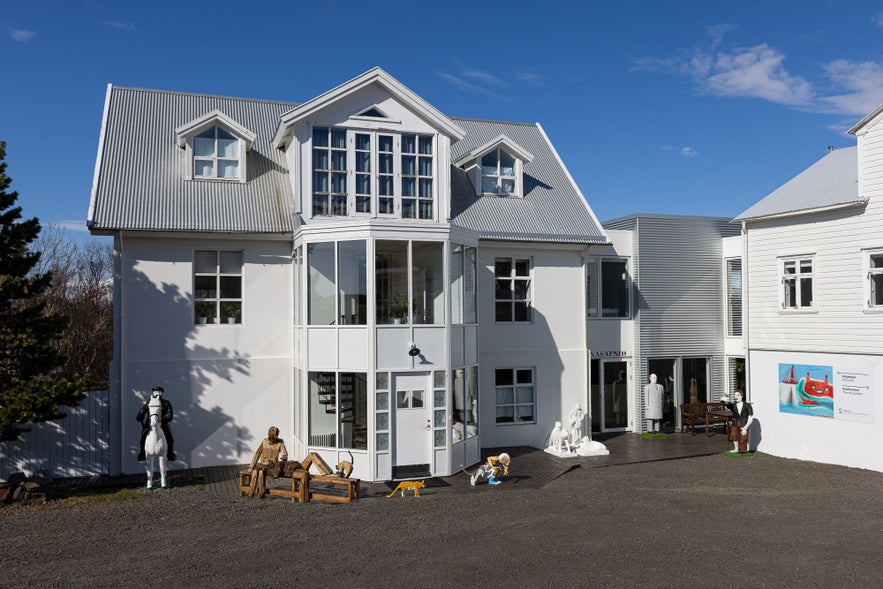
The Icelandic Folk and Outsider Art Museum, known as "Safnasafnið" in Icelandic, stands as a homage to the untamed expressions of art. Just a 10-minute drive from Akureyri, this museum is a treasure trove of creativity that breaks free from the constraints of convention.
Safnasafnid beautifully showcases the works of self-taught artists alongside local contemporary visual artists, with both practices complementing each other. The exhibits range from intricate tapestries and vivid paintings to eclectic sculptures, each bearing the unique stamp of its creator, unfiltered by mainstream norms. Their exhibitions change regularly, so you're sure to see some fresh concepts displayed.
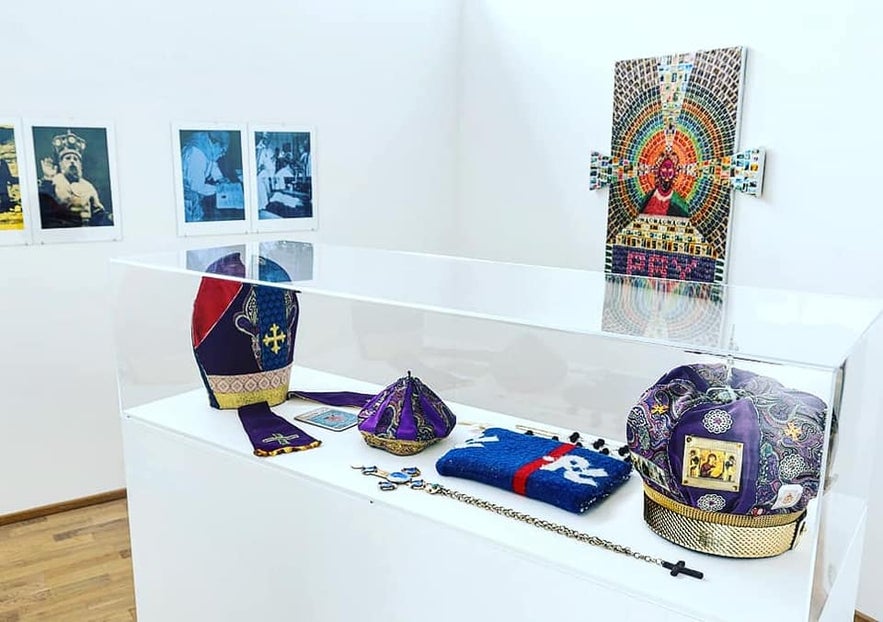
Photo from Safnasafnið.
Don't miss out on exploring the Folk and Outsider Art Museum while in the region, as it's one of the more unique art museums in Iceland. With the museum's goal of highlighting artists who haven't gotten the recognition they deserve, you're sure to see some truly unique and creative art during your visit.
You can make the short trip from Akureyri or include a stop during a self-drive tour of the Ring Road. It's also an easy addition to a sightseeing tour of the Diamond Circle.
- For more, check out Safnasafnid: A Jewel of an Art Museum in North Iceland
Husavik Whale Museum
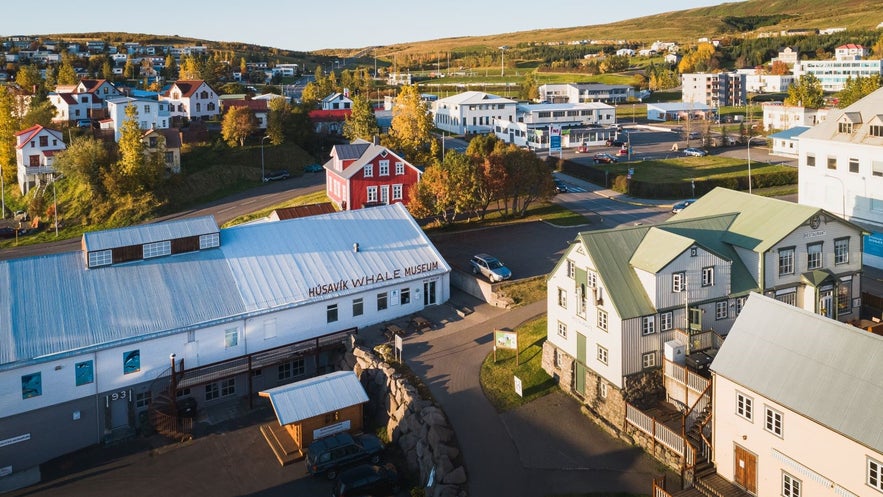 Located in the picturesque town of Husavik, often dubbed the 'Whale Capital' of Iceland, the Husavik Whale Museum is one of the most popular museums in North Iceland. It's dedicated to the deep connection between these majestic marine mammals and the Icelandic seascape.
Located in the picturesque town of Husavik, often dubbed the 'Whale Capital' of Iceland, the Husavik Whale Museum is one of the most popular museums in North Iceland. It's dedicated to the deep connection between these majestic marine mammals and the Icelandic seascape.
Established in 1997, the museum offers an enriching experience for visitors, as you'll learn about the diverse species of whales that grace the North Atlantic waters. It features real whale skeletons, which give visitors a palpable sense of the sheer magnitude and grace of these creatures.
The exhibits capture the awe these animals inspire and don't worry, the whales in the exhibit died from natural causes, so you can have a guilt-free experience when visiting.
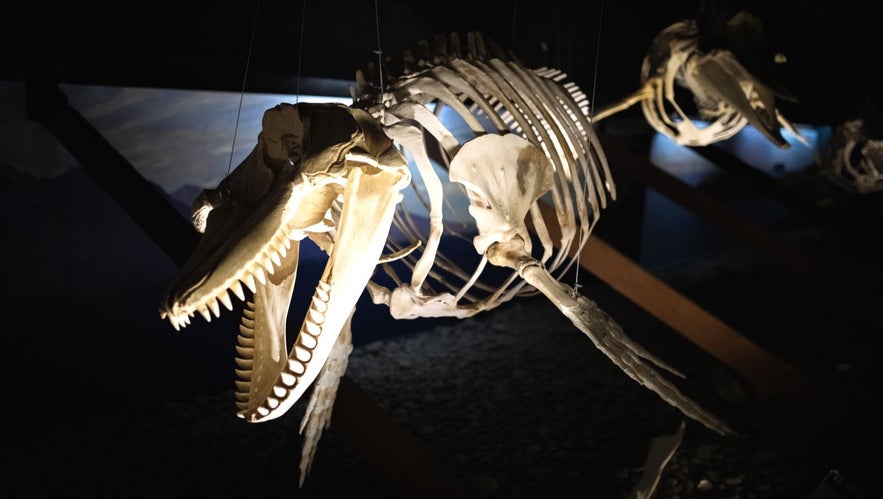 Detailed information boards complement the displays, delving into the biology, behavior, and conservation challenges facing each species. Moreover, the museum delves into the history of whale hunting in Iceland, its development, and the evolution of human-whale interactions.
Detailed information boards complement the displays, delving into the biology, behavior, and conservation challenges facing each species. Moreover, the museum delves into the history of whale hunting in Iceland, its development, and the evolution of human-whale interactions.
If you're planning to go whale-watching in Husavik, or anywhere else in Iceland for that matter, the museum provides essential context, enhancing your experience. It stands not just as an educational institution but as a tribute to the deep bond between Icelanders and the oceanic giants that roam their coastal waters.
The Husavik Eurovision Exhibition
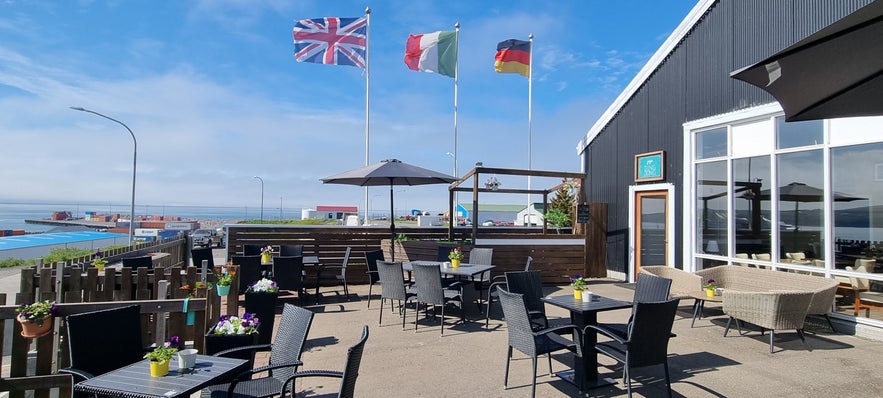
Photo from Jaja Ding Dong Húsavík.
In 2020, the town of Husavik burst onto the global stage because of its spotlight in the Netflix film "Eurovision Song Contest: The Story of Fire Saga." Celebrating this newfound fame and its intrinsic connection to the world of music, the town introduced the Husavik Eurovision Exhibition, a fun and unique stop in North Iceland.
The exhibition is a delightful dive into the world of Eurovision, its history, the impact of the movie, and the vibrant essence of the song contest itself. Visitors are treated to a plethora of memorabilia, interactive multimedia displays, real Eurovision costumes, and behind-the-scenes glimpses from the making of the film.
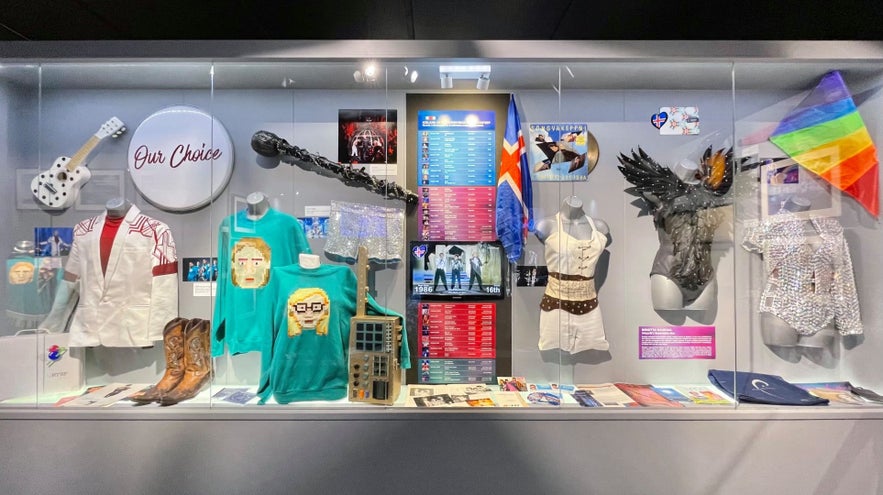
Photo from the Húsavík Eurovision Exhibition.
One of the most touching elements of the exhibit is a tribute to the film’s ballad "Húsavík (My Hometown)," which not only resonated with fans globally but also earned an Oscar nomination.
More than just a nod to a film or a song, the Husavik Eurovision Exhibition encapsulates the spirit of community, the universal language of music, and the profound way art and culture intertwine to forge connections. For Eurovision enthusiasts, music lovers, and film buffs alike, it's a quirky and fun experience on your travels.
Afterward, you can enjoy a treat at the Jaja Ding Dong bar at the entrance of the exhibition, which references another song from the film. Don't miss out on trying their themed cocktails and tasty treats as you enjoy the great harbor views.
The Best Museums in the Westfjords
The Westfjords Heritage Museum

Photo from the Westfjords Heritage Museum website.
Set against the dramatic backdrop of Iceland's rugged Westfjords, the Westfjords Heritage Museum serves as a poignant tribute to the region's rich maritime legacy and culture. Located in Isafjordur, the largest town in the Westfjords, this museum encapsulates the essence of life and survival in one of Iceland's most remote regions.
The museum is housed in some of the oldest buildings in Isafjordur. During a visit, you'll discover the history and development of the town, its surrounding region, and how it connects to the growth of the fishing industry. You'll also hear about how the daily life of locals has changed through time, especially during the 20th century. The museum also regularly hosts fun cultural events, such as a salted fish feast!
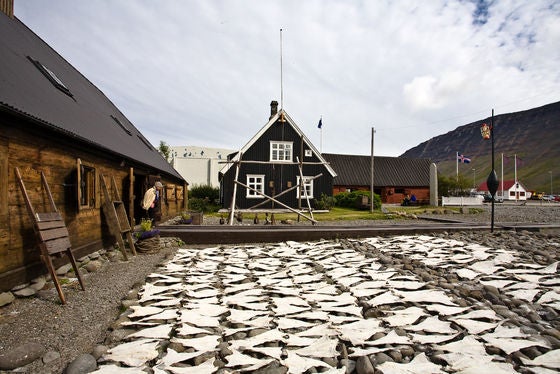
Photo from the Westfjords Heritage Museum website.
In the nearby town of Thingeyri, you can visit a different part of the museum, the Old Blacksmiths Workshop. It was the first of its kind in Iceland when it opened in 1913, and today, it serves as a living history museum.
If you're staying in accommodation in the Westfjords or simply stopping by in Isafjordur, a visit to the Westfjords Heritage Museum is a must. Discover the relationship between the people and the sea and how traditions, livelihoods, and culture were shaped by the cold Atlantic ocean.
As a plus, you may be able to spot the institution's most charming employee, the adorable museum cat, who has the name Kisa which simply translates to "Kitty."
The Osvor Maritime Museum

The Osvor Maritime Museum, located near the fishing village of Bolungarvik in the Westfjords, offers a dive into the nation's maritime past. The museum is a meticulous reconstruction of old fishing stations, a staple of the Icelandic coastline before the modernization of the fishing industry.
This small museum highlights an often-overlooked part of Icelandic history. Until the late 19th century, farming was much more prominent than fishing in Iceland, but those who were able would go themselves or send workers to fishing stations, or "verbúðir." Men, and in some cases women, would row out to sea all around the country in six or eight-seat boats. After a few weeks, they could start the return journey home with their share of the catch.
The Osvor Maritime Museum is a replica of such a fishing station, providing insight into a different time. You can explore the small living area and workspaces of the fishermen, and there are tools, equipment, and gear on display, showing the evolution of fishing techniques over the centuries. Next to the turf buildings, you can see a preserved 19th-century rowing boat.

During your visit, you can get a tour from the knowledgeable on-site guide, who's dressed in a replica of traditional fisherman's skin clothing. Known as "skinnklæði" in Icelandic, this clothing had a lot of folk beliefs surrounding it, as people held great respect for those risking their lives at sea.
A visit to the Osvor Maritime Museum provides a glimpse into the lives of past Icelanders, their relationship with nature, and the challenging conditions of the North Atlantic. You'll gain a new appreciation for this part of Iceland's heritage, making it a must-stop on your visit to the Westfjords.
The Arctic Fox Center
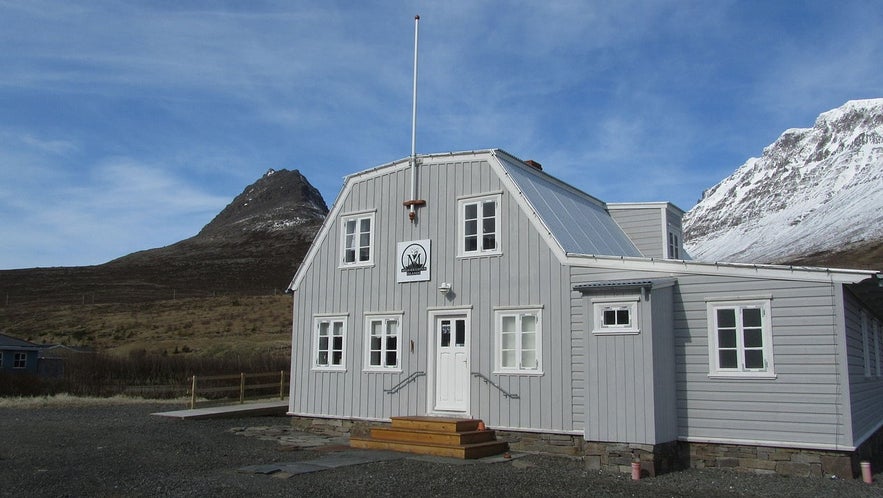
Photo from Wikimedia, Creative Commons, by MoZie. No edits made.
In the small fishing village of Sudavik, you'll find the Arctic Fox Center, committed to the knowledge and conservation of Iceland's only native mammal: the Arctic fox. It's a 10-minute drive from Isafjordur, and you can stroll through the center's exhibition, getting to know this charming and elusive animal.
The center showcases the Arctic fox in all its seasonal guises, from the lush summer browns to the pristine winter whites. The exhibit outlines its evolutionary journey, its adaptations for survival in the harsh climate, and its cultural significance in Icelandic folklore and history. Through interesting displays, photographs, and videos, visitors gain an intimate understanding of the fox’s behaviors, hunting techniques, and social dynamics.
The Arctic Fox Center is deeply committed to research and conservation. It serves as a hub for scientific study, aiming to preserve its habitat and ensure a sustainable coexistence between foxes and local communities.
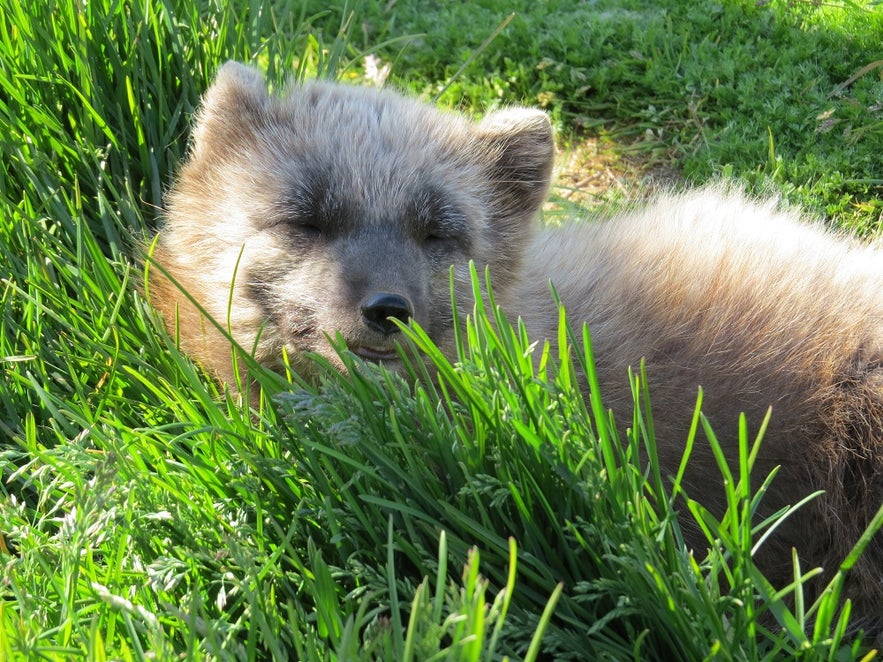
Photo from the Arctic Fox Center. Mói the fox enjoying a sunny day.
To make the visit even more amazing is the on-site fox enclosure, where you can see the adorable fox called Mói in a safe environment. If you're traveling around the Westfjords, this location is definitely worth a stop.
These animals can be hard to spot in the wild, but if that experience is on your bucket list, the best way to do so is by joining an Arctic fox watching tour in the Hornstrandir Nature Reserve, as a day trip from Isafjordur. The Hornstrandir nature reserve is also one of the most remote areas in Iceland, with no human habitation, and you can explore the stunning area with this 3-day Arctic fox and midnight sun photography tour.
The Art Museum of Samúel Jónsson
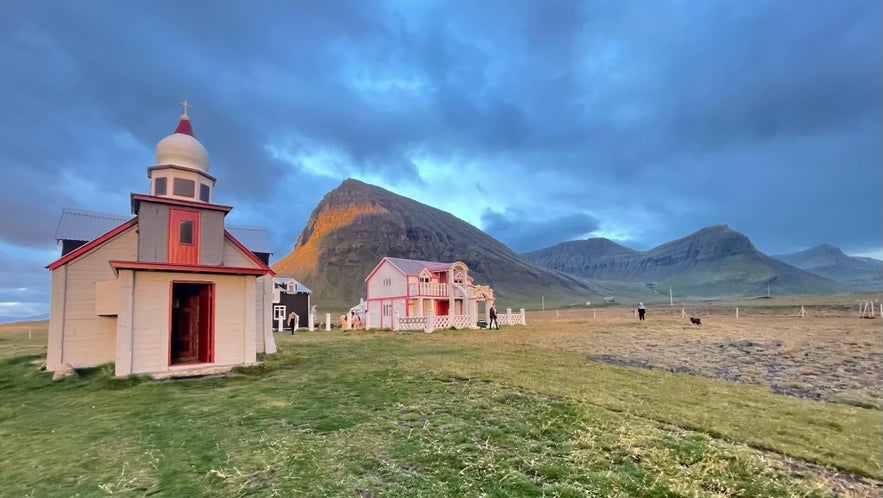
Photo from Listasafn Samúels.
In the remote Westfjords of Iceland, hidden amidst the stark landscapes, lies an unexpected oasis of creativity, the Art Museum of Samúel Jónsson. It's dedicated to the indomitable spirit of a man whose passion for art transcended formal training and societal expectations.
Samúel Jónsson poured his heart and soul into creating an array of sculptures, paintings, and architectural creations in his later life. Each piece, from his rendition of the Lion’s Fountain, inspired by the fountain in Alhambra, to his self-built church, speaks of an artist untamed by convention.
But perhaps what makes this museum deeply resonant is its backstory. Samúel began his artistic journey post-retirement, transforming his farmstead into a wonderland of art driven purely by intrinsic passion. His works brim with sincerity, imagination, and a whimsical charm.

Photo from Wikimedia, Creative Commons, by Rob Oo. No edits made.
Visiting The Art Museum of Samúel Jónsson is akin to stepping into a dream, as the museum buildings are truly unique, contrasting greatly with the surrounding tranquil nature.
This special location is well worth the trip if you're traveling around the Westfjords. It's a bit isolated, being an hour's drive from the nearest village of Bildudalur, but it's sure to leave a memorable impression if you take the time to visit.
Icelandic Sea Monster Museum
Photo from the Icelandic Sea Monster Museum website.
Situated in the fishing village of Bildudalur, the Icelandic Sea Monster Museum beckons those with an interest in the mystical and the unexplained. Iceland’s coastlines, laden with dramatic fjords and unpredictable waters, have been a fertile ground for tales of mysterious marine creatures for centuries. The museum captures this essence, weaving folklore with testimonies and eyewitness accounts through time.
Walking through its dimly lit corridors, you'll be introduced to various mythical beasts that have, for generations, haunted the dreams and tales of Icelanders. Each creature is brought to life through imaginative displays and intriguing narrations.
The museum also dives deep into the cultural significance of these stories, exploring how they have shaped the psyche of the Icelandic people and how they have persisted through the ages. A visit to the Icelandic Sea Monster Museum offers a journey into the depths of Icelandic culture, the human imagination, and our age-old relationship with the enigmatic world beneath the waves.

Photo from the Icelandic Sea Monster Museum website.
This is an especially great museum for families, so make sure to stop by if you're traveling with children. A visit will pair greatly with any coastal excursion, especially if you plan to go on a boat tour, kayaking tour, or try another water-related activity while in Iceland. You never know, maybe you'll spot one of these creatures yourself.
Museum of Icelandic Sorcery and Witchcraft

Photo from Wikimedia, Creative Commons, by Christian Bickel fingalo. No edits made.
The Museum of Icelandic Sorcery and Witchcraft, situated in the quaint town of Holmavik in the Westfjords, offers a fascinating insight into the darker aspects of Iceland's folklore and history. Delving deep into the 17th-century witch-hunts in Iceland, the museum paints a vivid picture of a time when fear, superstition, and misunderstanding ruled the psyche of the nation.
Visitors are introduced to an array of rituals, magical symbols, and sorcerous artifacts. One of the museum's most chilling exhibits is the "nábrók" or necropants, a realistic replica of a pair of pants made from the skin of a dead man believed to bring wealth to its wearer under specific conditions.
 The museum not only chronicles the eerie tales of sorcery but also casts light on the tragic stories of those accused of witchcraft, many of whom faced gruesome fates. During this time, 21 people were sentenced to burn for their supposed practice of magic, with many more accused, especially in the Westfjord region. The fascinating historical accounts reveal societal dynamics, the interplay of power, and the persecution of the misunderstood.
The museum not only chronicles the eerie tales of sorcery but also casts light on the tragic stories of those accused of witchcraft, many of whom faced gruesome fates. During this time, 21 people were sentenced to burn for their supposed practice of magic, with many more accused, especially in the Westfjord region. The fascinating historical accounts reveal societal dynamics, the interplay of power, and the persecution of the misunderstood.
The Museum of Icelandic Sorcery and Witchcraft is one of the most interesting museums in Iceland, showcasing the lengths to which superstitions and fear can shape history. It's an essential stop on any trip to the Westfjords.
- See more: Holmavik in the Westfjords Region of Iceland - the Sorcery Town!
- See also: Witchcraft and Sorcery in Iceland
The Best Museums in West Iceland
The Settlement Center
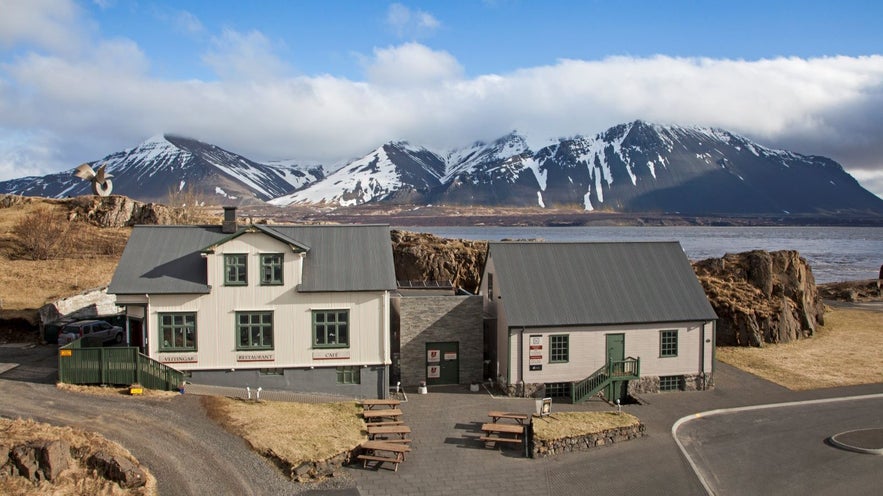 Located in the quaint town of Borgarnes, a mere hour's drive from Reykjavik, the Settlement Center offers an interesting dive into Iceland's earliest days. Comprising two primary exhibitions, the center tells the saga of the first settlers along with the legendary tales of Egill Skallagrímsson, one of Iceland's most iconic Viking poets and warriors. You can visit both with this immersive 1-hour exhibition tour.
Located in the quaint town of Borgarnes, a mere hour's drive from Reykjavik, the Settlement Center offers an interesting dive into Iceland's earliest days. Comprising two primary exhibitions, the center tells the saga of the first settlers along with the legendary tales of Egill Skallagrímsson, one of Iceland's most iconic Viking poets and warriors. You can visit both with this immersive 1-hour exhibition tour.
Interactive displays and vivid narratives make the past come alive, giving visitors a view of the trials, tribulations, and triumphs of the pioneers who settled Iceland. The audio guides, available in multiple languages, provide a rich storytelling experience, enhancing the immersion.
 Apart from its historical allure, the Settlement Center also has a homey restaurant, a convenient stop on your travels. It can also be a cozy location for dinner if you're staying in accommodation in Borganes.
Apart from its historical allure, the Settlement Center also has a homey restaurant, a convenient stop on your travels. It can also be a cozy location for dinner if you're staying in accommodation in Borganes.
In essence, a visit to the Settlement Center offers an understanding of the foundation upon which this nation was built, and it will provide context to many historic locations you may visit during your time in Iceland.
The Bjarnarhofn Shark Museum
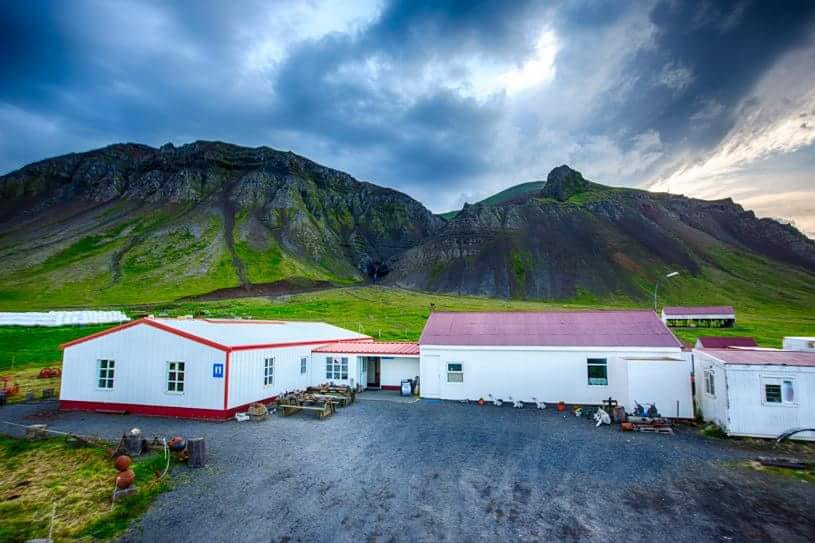
Photo from the Bjarnarhofn Shark Museum.
You may already have heard about some of Iceland's unappetizing traditional food, such as sheepshead and sour ram's testicles, which you can try during a food walk tour in Reykjavik. The most famous dish, however, is the fermented shark, or "hákarl," which you can learn about during a visit to the Bjarnarhofn Shark Museum.
This museum is dedicated to the traditional process of fermenting sharks. During a visit, you will learn all about the Greenland shark and its importance throughout Icelandic history from your helpful museum guide. You'll also hear about how they were traditionally caught and prepared.

Photo from Wikimedia, Creative Commons, by Chris 73. No edits made.
To complete the experience, you'll be able to taste this dish for yourself during your visit. If you're planning on trying fermented shark while in Iceland, this is really the best place to do so! Afterward, you can also treat yourself to some more typical local seafood in their bistro.
The museum is located on the Snaefellsnes peninsula, an area that features some stunning nature. You can explore the area as a day trip from Reykjavik, but it's best enjoyed over at least two days. You can find varied accommodations in Snaefellsnes that will allow for a stress-free adventure and more time to visit the Bjarnarhofn Shark Museum and attractions like Mt. Kirkjufell and the Snaefellsjokull National Park. Alternatively, you can visit the area on one of the many Snaefellsnes tours.
- Check out the Ultimate Guide to Iceland Food Culture
The War and Peace Museum

Photo from the War and Peace Museum website.
For insight into some of Iceland's more recent history, a visit to the War and Peace Museum may be in order. Amidst the tranquil backdrops of the Hvalfjordur fjord in the Southwest, just an hour's drive outside Reykjavik, this museum highlights Iceland's strategic role during World War II and the occupation of the British and United States military in the 1940s.
Through an array of artifacts, photographs, and accounts, visitors are introduced to the short-term and long-term impacts of this wartime occupation, both on the Icelandic way of life and the geopolitical stakes of the North Atlantic.
Beyond its historical narrations, the museum also underscores the theme of coexistence. It reflects on the juxtaposition of war and Iceland's emphasis on peace. Stories of camaraderie and cultural exchanges offer a silver lining to the otherwise dark cloud of war.
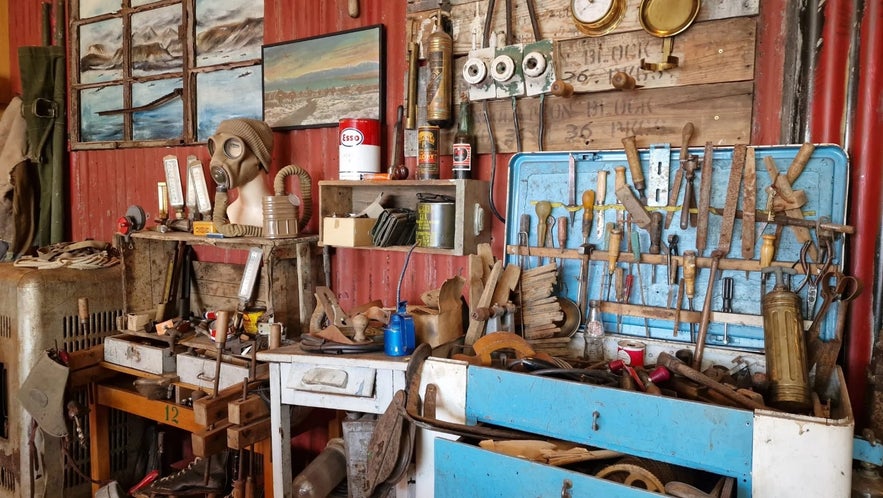
Photo from the War and Peace Museum website.
You can find remains from the war all over Iceland, some more subtle than others, and the War and Peace Museum can provide insight into the locations you may encounter on your travels. Because of its convinient location in the Hvalfjordur fjord, you can easily incorporate a visit from Reykjavik into your plans.
The fjord itself provides a beautiful drive, with locations like the Glymur waterfall and the relaxing Hvammsvik Hot Springs to be found along the road. It's also a popular location for northern lights tours during winter.
It's the perfect day trip from Reykjavik, or an extension of your Ring Road travels, so don't miss out on a visit to the War and Peace Museum.
The Icelandic Museum of Rock 'n' Roll
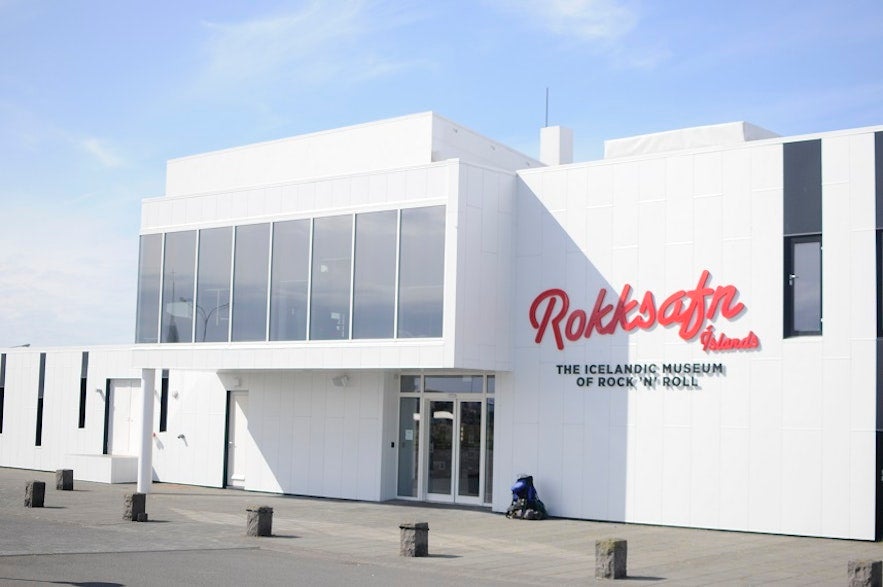 The Icelandic Museum of Rock 'n' Roll is located in the town of Keflavik, on the picturesque Reykjanes peninsula in the Southwest. It's just a 10-minute drive from Keflavik International Airport and a convenient stop on any traveler's itinerary. You can also combine a visit with a trip to the famous Blue Lagoon, just a 17-minute drive away.
The Icelandic Museum of Rock 'n' Roll is located in the town of Keflavik, on the picturesque Reykjanes peninsula in the Southwest. It's just a 10-minute drive from Keflavik International Airport and a convenient stop on any traveler's itinerary. You can also combine a visit with a trip to the famous Blue Lagoon, just a 17-minute drive away.
This modern museum dives into the stories of Icelandic pop and rock music, from the early days of Icelandic radio to the rise of internationally acclaimed bands like Sigur Rós, Kaleo, Of Monsters and Men, and of course, the iconic Björk. For those unfamiliar with Iceland's contributions to music, it's an opportunity to discover and appreciate new artists and sounds.
One of the museum's major draws is its interactivity. Visitors can not only listen to Icelandic music spanning decades but also try their hands at playing instruments, along with fun multimedia displays. You can also book your Museum of Rock 'n' Roll entry with an iPad-guided tour to make the most of your visit.
 After exploring the exhibition, you can rest at their coffee shop and enjoy a cup of coffee. You can also stop by their museum store, where you can find some great and unique music-themed souvenirs.
After exploring the exhibition, you can rest at their coffee shop and enjoy a cup of coffee. You can also stop by their museum store, where you can find some great and unique music-themed souvenirs.
It's easy to spend up to an hour exploring the exhibit and getting to know new sounds. This is a must-stop for anyone interested in music, and you may just discover your new favorite band, so make sure to include the museum in your itinerary and gain deeper insight into the Icelandic culture.
- See also: An Afternoon in Keflavik
The Best Educational Experiences in Iceland
There are many fun ways to get to know Icelandic history, culture, and nature, and here are some unique experiences to try during your time in the country.
Lava Show
 In the land of fire and ice, the Lava Show presents a genuinely awe-inspiring experience that captures the raw power of the earth. The show has two locations, in the town of Vik on the South Coast and in the Capital Area, and it offers spectators a rare opportunity to witness molten lava up close and personal.
In the land of fire and ice, the Lava Show presents a genuinely awe-inspiring experience that captures the raw power of the earth. The show has two locations, in the town of Vik on the South Coast and in the Capital Area, and it offers spectators a rare opportunity to witness molten lava up close and personal.
Unlike anything else, the Lava Show recreates a volcanic eruption in a controlled environment. Visitors are not just passive observers; they can hear the sizzle, feel the heat, and smell the distinctive aroma as red-hot lava meets cold ice, producing steam and evoking the primeval forces that shaped and continue to reshape our planet.
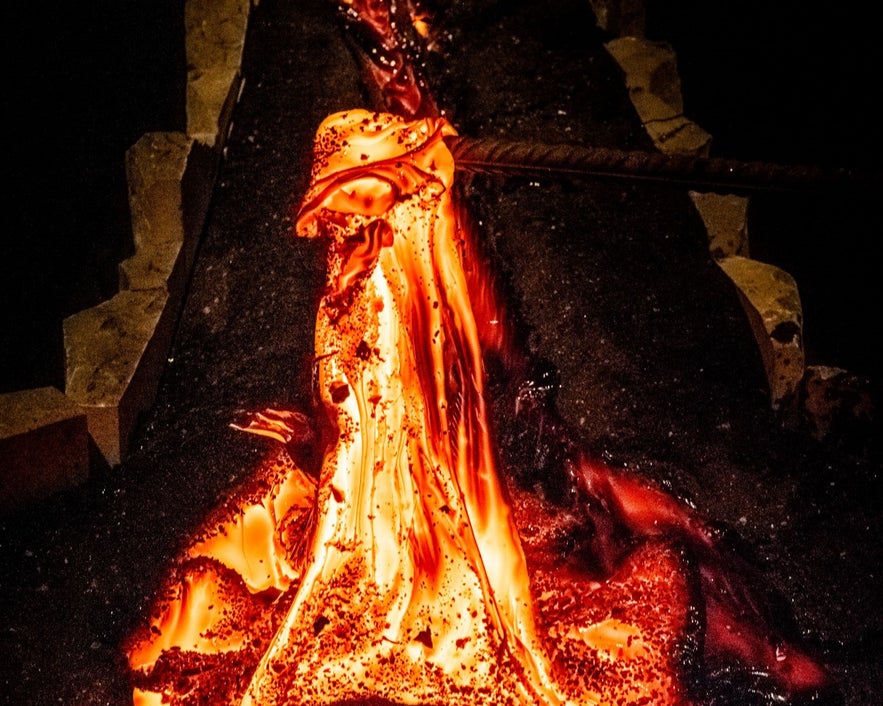 As the lava flows, crackling and bubbling, you'll hear the story of Iceland's geological history, its vibrant landscapes born from volcanic activity. The knowledgeable hosts provide insightful narratives, blending scientific explanations with fascinating folklore.
As the lava flows, crackling and bubbling, you'll hear the story of Iceland's geological history, its vibrant landscapes born from volcanic activity. The knowledgeable hosts provide insightful narratives, blending scientific explanations with fascinating folklore.
The Lava Show is an educational experience that underscores the relentless power of nature, reminding us of both the volatile beauty of our world and the intricate balance that sustains it. Book your entry to the thrilling Lava Show in Vik and prepare to be amazed.
Caves of Hella
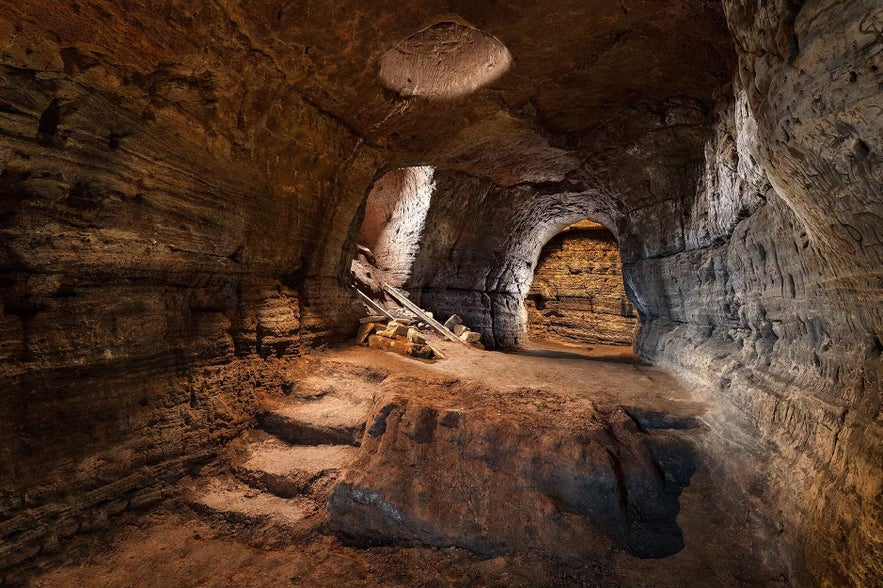
Photo from Caves of Hella Guided Tour. Archaeological Exploration of Iceland's Oldest Man-Made Site.
Just over an hour's drive from Reykjavik, you can explore the magical Caves of Hella, Iceland's oldest man-made site. In total, there are twelve caves in the area, but four have been opened to the public. To protect the site, you can only visit the Caves of Hella with a guided tour.
It's not truly known when the caves were constructed, but it's believed to have been around the time of settlement in the 9th century. There are even some who suggest that they were made before the first settlers are believed to have arrived in Iceland!

Photo from Caves of Hella Guided Tour. Archaeological Exploration of Iceland's Oldest Man-Made Site.
This archeological site is a historical marvel. These winding caves feature carved crosses and engravings on the walls, which you can explore during your tour. You'll hear about the use of these caves through the centuries, the folklore that surrounds the area, and the theories about who created the caves from your guide, who'll answer any questions you might have on the way.
The caves are located just outside the town of Hella, and you can easily reach them with a small rental car. Don't miss out on exploring this historic location during your visit to Iceland.
Battle of Iceland 1238
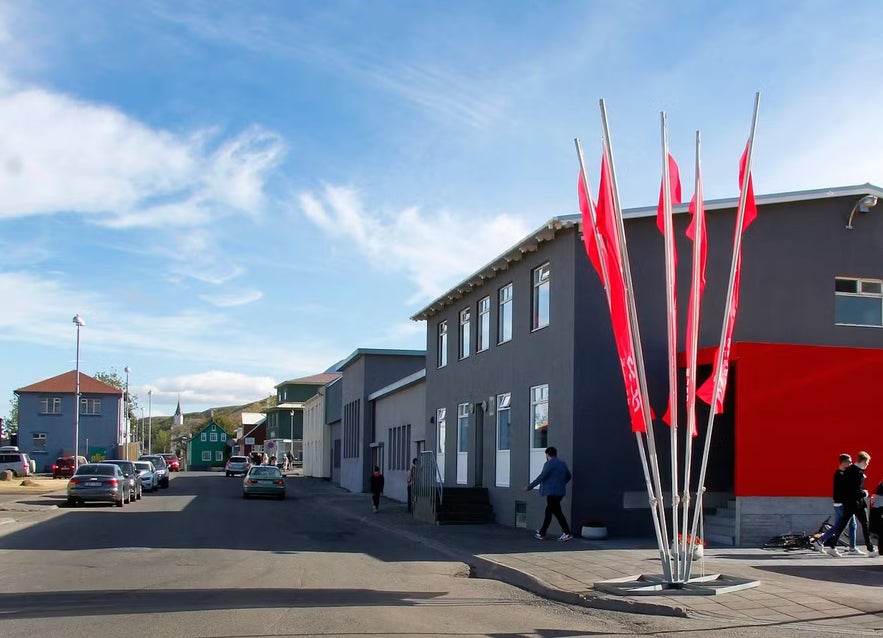
Photo from Admission Ticket to the 1238 Battle of Iceland Museum in Saudarkrokur.
The North of Iceland, and specifically the fjord of Skagafjordur, is the site of some of the greatest events in the Icelandic Sagas, most famously, the largest battle in Icelandic history, the Battle of Orlygsstadir, or "Örlygsstaðabardagi."
This historic battle took place in the year 1238 during the turbulent age of the Sturlungar, a period of civil unrest in Iceland when different families fought for power. This struggle led to Iceland becoming a part of the Kingdom of Norway in 1262.
The Battle of Orlygsstadir saw the Sturlungar family fight against the Ásbirningar and Haukdælir families, the latter two eventually becoming victorious. In the nearby town of Saudarkrokur, you can learn about this monumental event at the recently opened Battle of Iceland 1238 exhibition, which lets you step into the past. Quite literally!
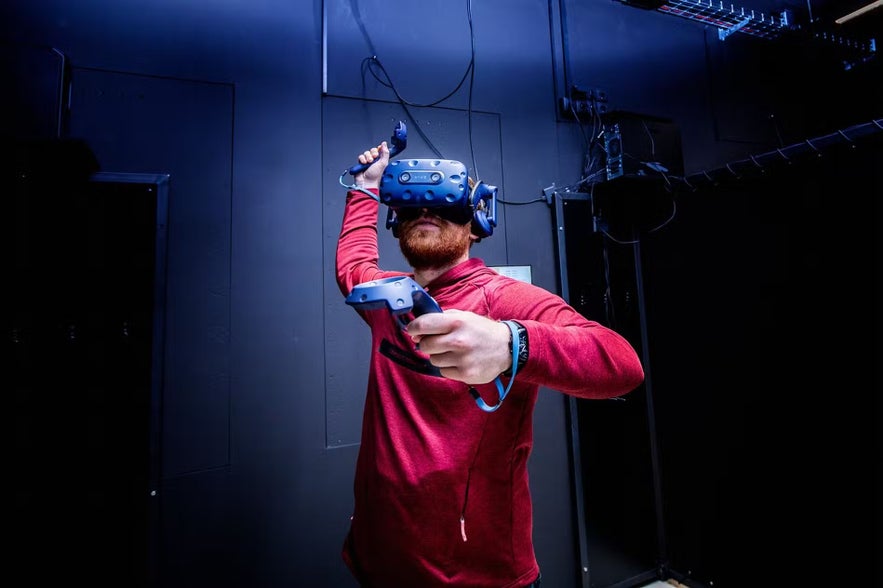
Photo from Admission Ticket to the 1238 Battle of Iceland Museum in Saudarkrokur.
What makes the Battle of Iceland 1238 exhibition special is the option to experience the Battle of Orygsstadir for yourself with virtual reality technology. You'll be able to explore the exhibition space, learn about the battle, the clashing families, and historic weapons, and then participate in the battle with the ultimate immersive experience.
This amazing exhibition is a fantastic way to learn about this period of Iceland's history. It's also great for families, as it's a fun and memorable way to discover the past. We recommend purchasing your admission ticket to the Battle of Iceland exhibition ahead of time, and if you're traveling with family, you can get the special family pack entrance. The minimum age of visitors is 6 years old.
If you want to learn about the Viking history of Iceland but aren't traveling to the North, you can also join this Sout Coast Viking sagas tour from Reykjavik. You'll discover some of Iceland's most iconic attractions while hearing about the region's rich history along the way.
Laugarvatnshellar Caves
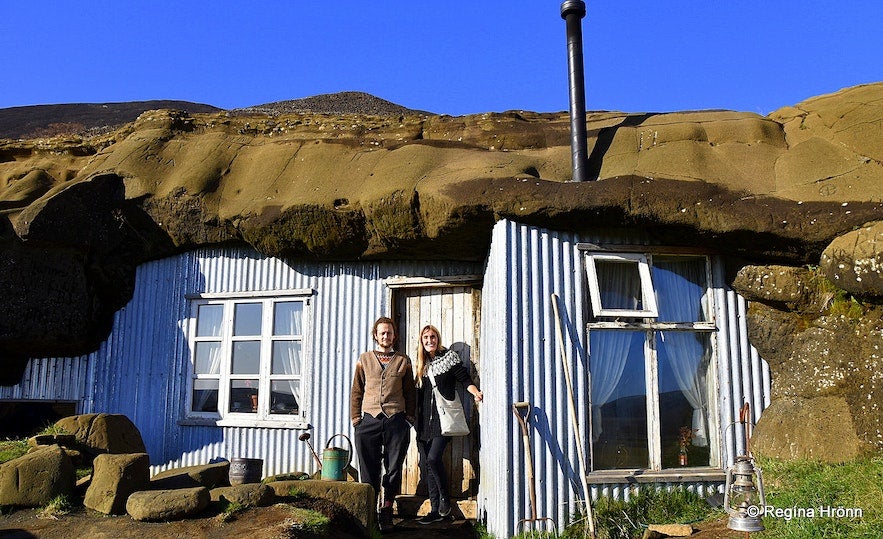
Photo from Regína Hrönn.
Amidst the rolling hills near Thingvellir National Park lies a discreet testament to human resilience and adaptability, the Laugarvatnshellar Caves. These man-made caves were home to two families from 1910 to 1911 and then from 1918 to 1921, and you can see how daily life looked during a visit.
If you want to include the caves on your itinerary, you'll have to book a guided tour of the Laugarvatnshellar caves. You'll hear all about the history of the caves and their inhabitants, how in the world this unusual living arrangement came about, and discover the connection these people had with the surrounding nature.

Photo from Regína Hrönn.
Inside, you'll see the home as it looked around 1920, equipped with the same comforts as most other homes at the time. The cave walls contrast with the homey furniture and items, making for a memorable sight.
It's not known who originally carved out the Laugarvatshellar caves, but this is a very special location in Iceland. It was very uncommon for people to live in caves, so don't forget to stop by during your travels around the South Coast.
The caves are a 20-minute drive from the main walking area of Thingvellir National Park, which is one of the three main stops on the Golden Circle route. They're also an 11-minute drive from the village of Laugarvatn, where you can visit the relaxing Fontana Spa and try a unique rye bread-tasting culinary tour.
Eiriksstadir
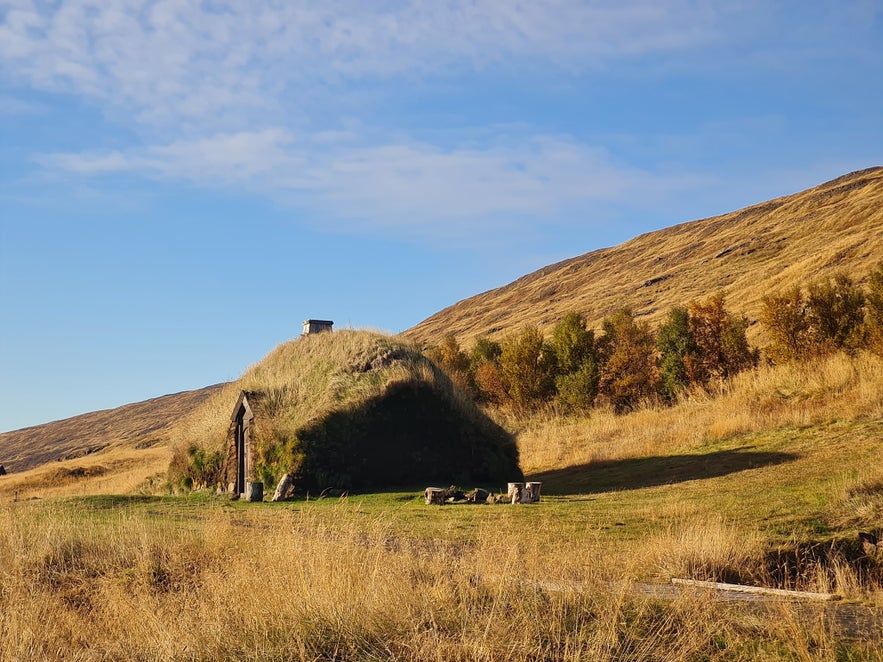 Set among the grassy hills of Haukadalur in West Iceland, close to the town of Budardalur, the Eiriksstadir Viking Longhouse offers an immersive journey into the heart of the Settlement Era. The longhouse is a recreation of a historical site in the same area, which is believed to be the former homestead of Erik the Red, the explorer who founded Greenland's first Norse settlements.
Set among the grassy hills of Haukadalur in West Iceland, close to the town of Budardalur, the Eiriksstadir Viking Longhouse offers an immersive journey into the heart of the Settlement Era. The longhouse is a recreation of a historical site in the same area, which is believed to be the former homestead of Erik the Red, the explorer who founded Greenland's first Norse settlements.
It's also thought to have been the birthplace of his son, Leif the Lucky, credited with venturing to North America around the year 1000, centuries before Columbus.
A visit to the Eiriksstadir Longhouse is a voyage through time. It was meticulously built using authentic methods and materials of the era. The atmosphere inside is palpable, with a central hearth that warms the space, evoking the daily lives and familial gatherings of the past.
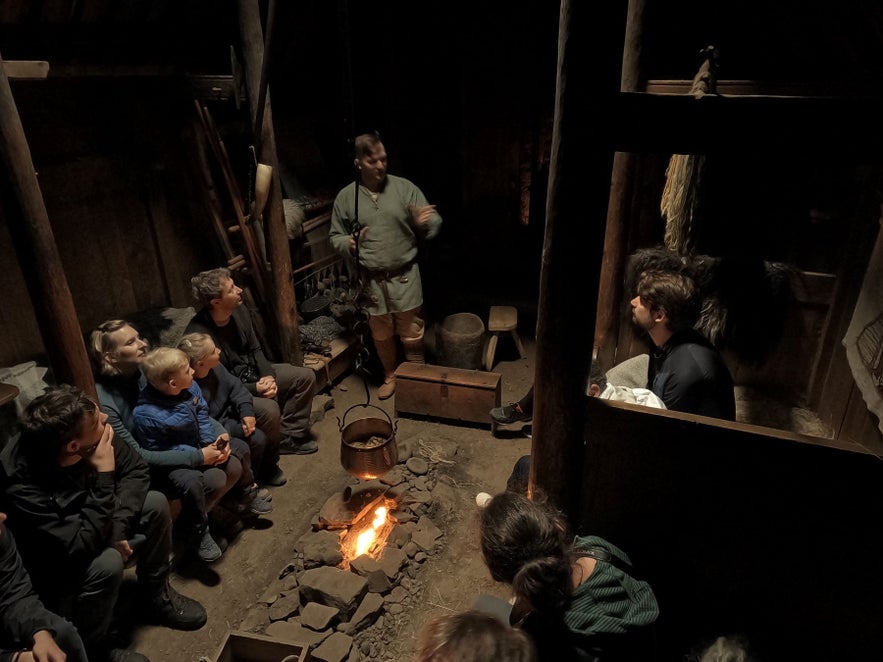 Adding depth to the ambiance are the costumed guides who inhabit this space, bringing the 10th century to life. They share tales of exploration and adventure and demonstrate crafts, offering insights into the daily routines and challenges faced by Iceland's earliest settlers.
Adding depth to the ambiance are the costumed guides who inhabit this space, bringing the 10th century to life. They share tales of exploration and adventure and demonstrate crafts, offering insights into the daily routines and challenges faced by Iceland's earliest settlers.
If you're venturing on a West Iceland adventure or traveling around Iceland, you can easily include a stop on the way. It's just a 10-minute drive from the Ring Road and definitely worth the detour!
The Best Museums in Reykjavik
In this article, we have put our focus on the many fascinating museums that can be found around the countryside of Iceland. Being the capital and the largest settlement in Iceland by far, Reykjavik also has many great museums that are worth visiting. Below are just a few of them, but if you would like a more comprehensive list, make sure to read our article about the Top 10 Museums in Reykjavik, which delves deeper into each one and also includes some hidden gems.
The Phallological Museum
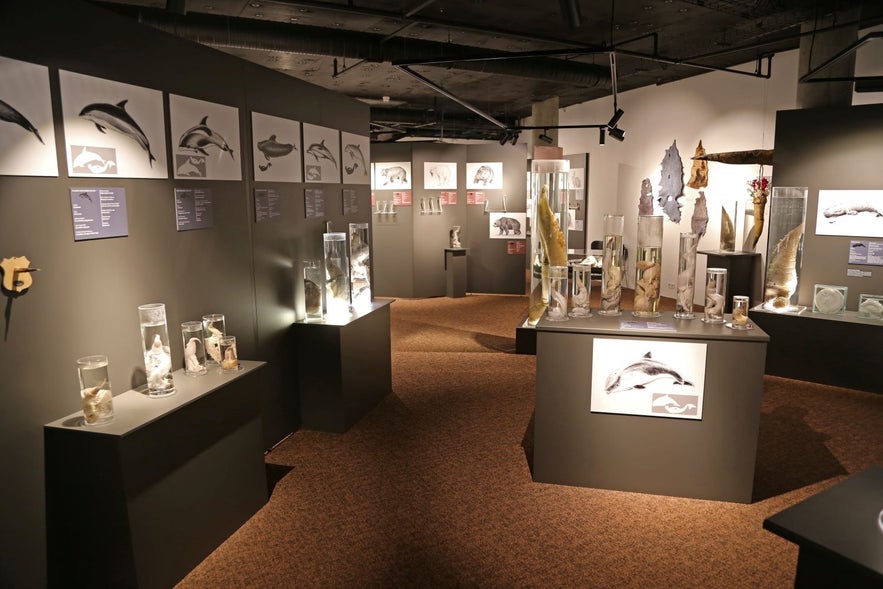
The National Museum of Iceland
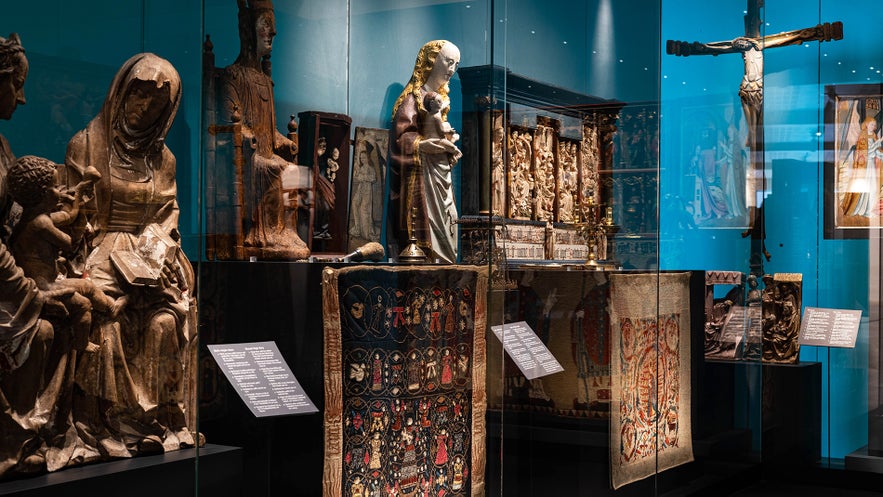 The National Museum of Iceland is the largest museum dedicated to the history of Iceland, with incredible artifacts ranging from the Viking period, throughout the Middle Ages and into modern times. Here you will find Viking swords, drinking horns, intricately carved wooden figures, historical costumes, and priceless hand-written books and chronicles from centuries ago from which we derive our knowledge of Iceland's past. If you'd like to take a trip through the history of Iceland, book a hassle-free entrance ticket to the National Museum today!
The National Museum of Iceland is the largest museum dedicated to the history of Iceland, with incredible artifacts ranging from the Viking period, throughout the Middle Ages and into modern times. Here you will find Viking swords, drinking horns, intricately carved wooden figures, historical costumes, and priceless hand-written books and chronicles from centuries ago from which we derive our knowledge of Iceland's past. If you'd like to take a trip through the history of Iceland, book a hassle-free entrance ticket to the National Museum today!
Whales of Iceland

Perlan - Wonders of Iceland
 Perlan is an impressive building that stands atop a hill overlooking the city of Reykjavik. In it, you will find a few immersive exhibitions dedicated to the multi-faceted nature of Iceland. There is a volcano section where you can learn all about Iceland's geological power, there is a replica of a nesting bird's cliff where you can learn about the many species of birds that make Iceland their home, and if you want to learn more about the elusive northern lights, there's also a section dedicated to the aurora borealis. The most interesting part is the ice cave on the second floor, which is a real man-made ice cave that feels like walking through a maze of ice! On top of it all (literally) is the great viewing platform which gives a 360-degree panoramic view of the city. This museum is ideal for visitors traveling with children as the displays are fun and interactive, so make sure to book your tickets to the Perlan Museum.
Perlan is an impressive building that stands atop a hill overlooking the city of Reykjavik. In it, you will find a few immersive exhibitions dedicated to the multi-faceted nature of Iceland. There is a volcano section where you can learn all about Iceland's geological power, there is a replica of a nesting bird's cliff where you can learn about the many species of birds that make Iceland their home, and if you want to learn more about the elusive northern lights, there's also a section dedicated to the aurora borealis. The most interesting part is the ice cave on the second floor, which is a real man-made ice cave that feels like walking through a maze of ice! On top of it all (literally) is the great viewing platform which gives a 360-degree panoramic view of the city. This museum is ideal for visitors traveling with children as the displays are fun and interactive, so make sure to book your tickets to the Perlan Museum.
Honorable Mentions in the Capital Region
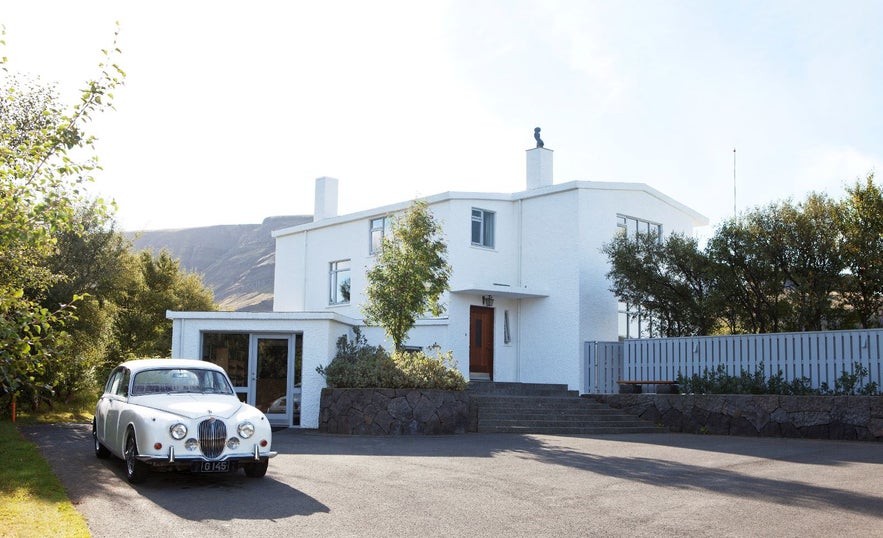
You can visit the historic Gljufrasteinn at the edge of the Capital Region, the home of Halldór Laxness.
While the popular museums in Reykjavik often grab the limelight, there are many great museums within the city's surrounding towns. As these museums are within the Capital Region, they don't really fit on this list, but at the same time, they're not in Reykjavik itself either. That's why we're including them here as honorable mentions.
-
The Museum Of Design And Applied Art: Located in the town of Gardabaer, this museum is dedicated to Icelandic design and architecture. It showcases the evolution and versatility of local design, from historical artifacts to contemporary creations. You'll find great temporary exhibitions showcasing different designers, architects, and artists, providing insight into Iceland's design history.
-
Hafnarfjordur Heritage Museum: Dive deep into the fascinating history of the charming town of Hafnarfjordur, known for its beautiful houses, vast lava fields, and stories of hidden people. This museum tells the story of the town, and its development, with most artifacts having been gifted to the institution by locals.
-
Hafnarborg Center of Art and Culture: Positioned in the heart of Hafnarfjordur, Hafnarborg is both an art museum and a cultural center. Housing a vast collection of Icelandic contemporary art, it stands as a beacon of artistic expression, regularly hosting concerts, lectures, and cultural events. Their exhibitions change regularly and celebrate varied art forms.
-
Gerdasafn: Dedicated to the modernist artist Gerður Helgadóttir, this museum in the town of Kopavogur is a treasure trove of sculpture, stained glass, and mosaics. Along with work by Gerður, Gerdasafn also features temporary exhibitions featuring known and up-and-coming artists.
-
Gljufrasteinn: This museum is the former home of Nobel Prize winner Halldór Laxness, preserved in time. It's just on the edge of the Capital Area, by the town of Mosfellsbaer, offering visitors a glimpse into the writer's life and the era in which he thrived. Surrounded by idyllic landscapes along the road towards Thingvellir National Park, it’s a serene space where you can get to know one of Iceland's most influential authors.
Summary of the Best Museums in Iceland
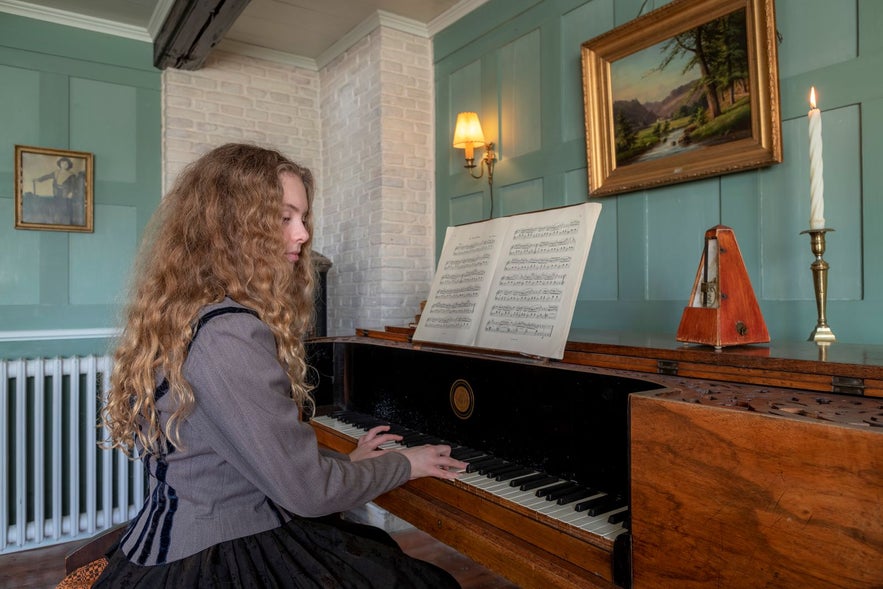 In the vast expanse of Iceland's countryside, museums stand as gateways to the heart of the nation. These cultural hubs transport visitors to bygone eras, evoking a profound connection with the land and its narratives. During your travels in Iceland, include a visit to some of the country's interesting museums, exhibitions, and experiences and get to know the Icelandic people, their history, and their culture.
In the vast expanse of Iceland's countryside, museums stand as gateways to the heart of the nation. These cultural hubs transport visitors to bygone eras, evoking a profound connection with the land and its narratives. During your travels in Iceland, include a visit to some of the country's interesting museums, exhibitions, and experiences and get to know the Icelandic people, their history, and their culture.
Which of these museums and exhibitions sound the most interesting? Have you visited any of them? Are there any museums missing that deserve a place on this list? We'd love to hear your thoughts in the comments below!


